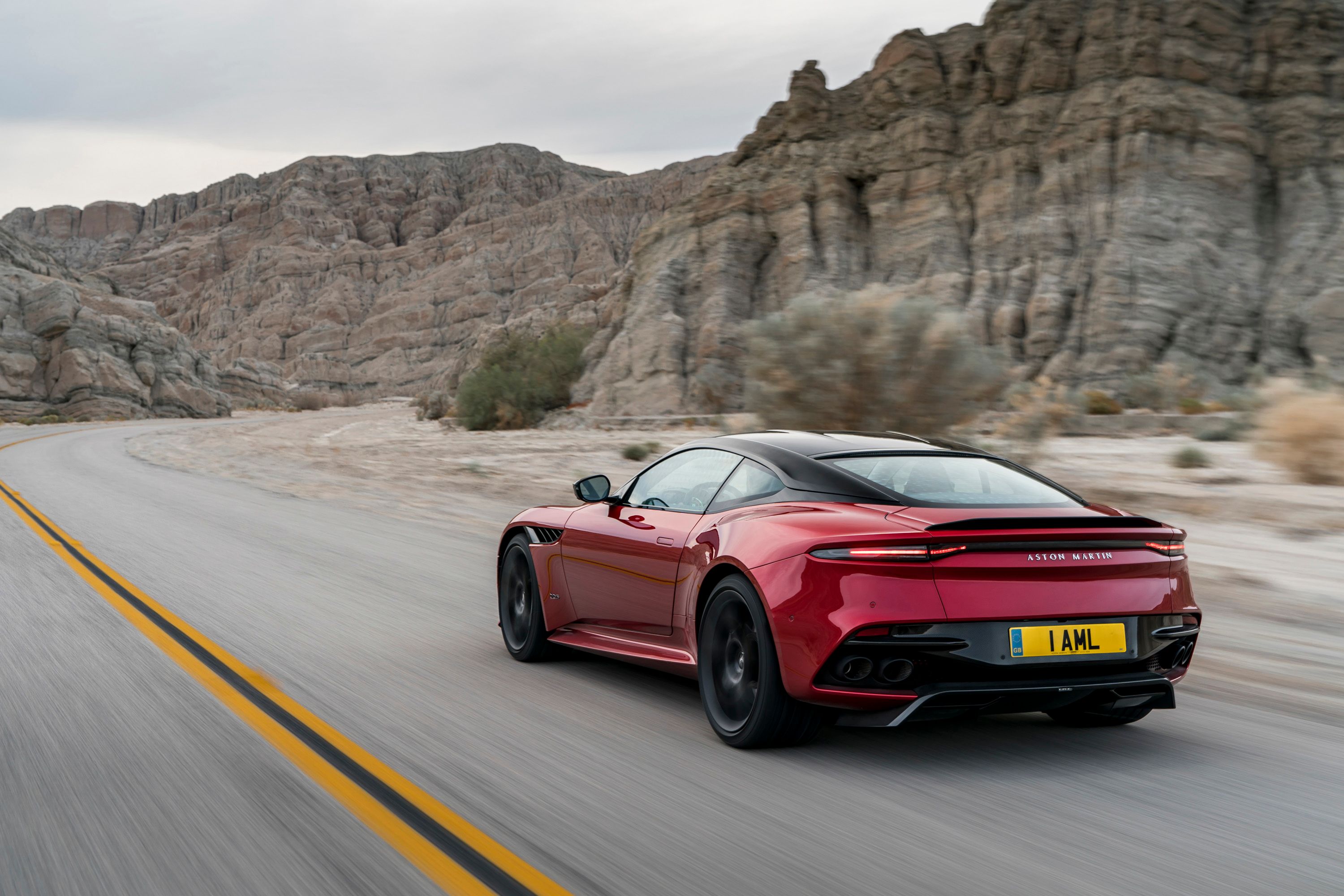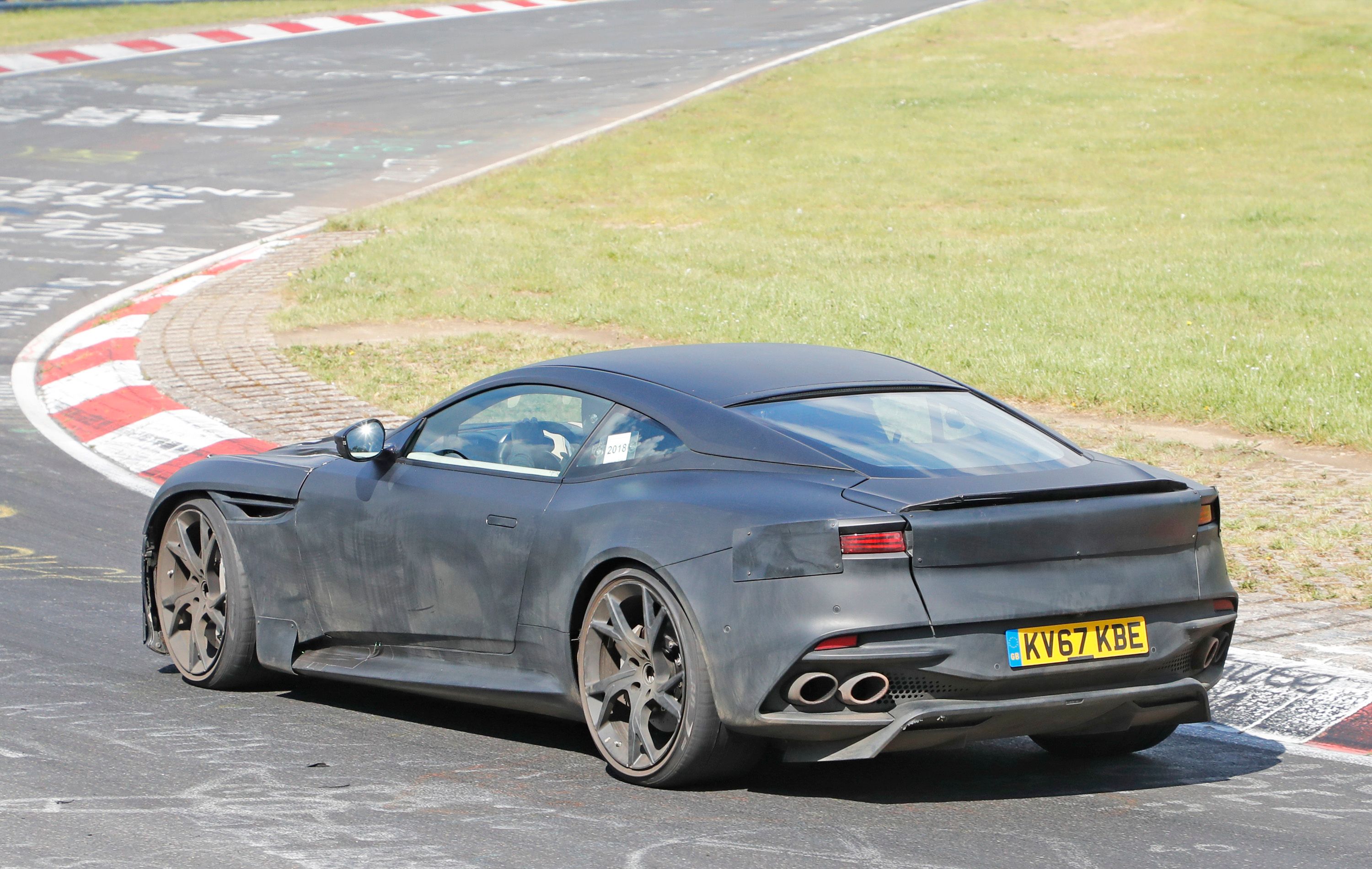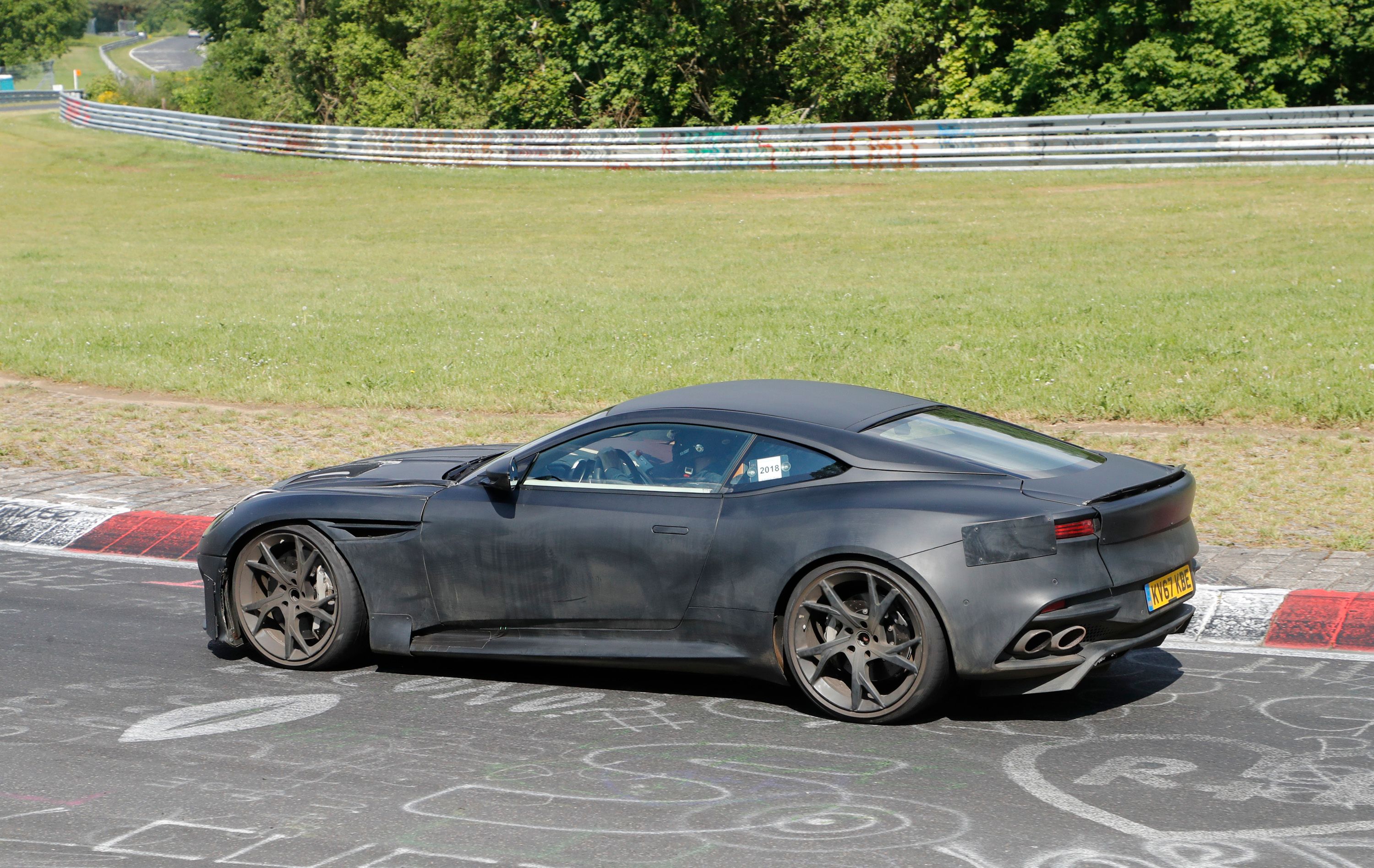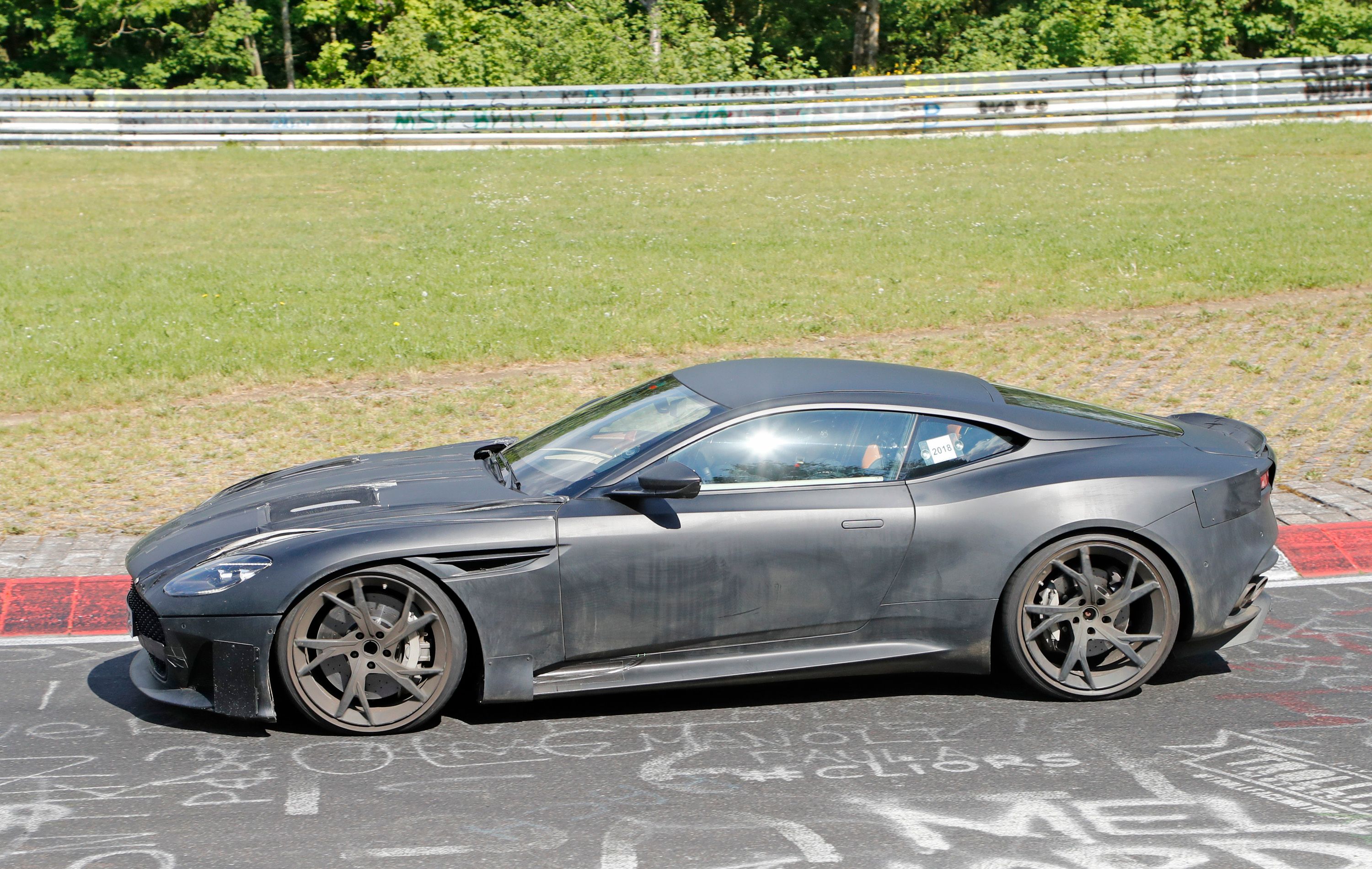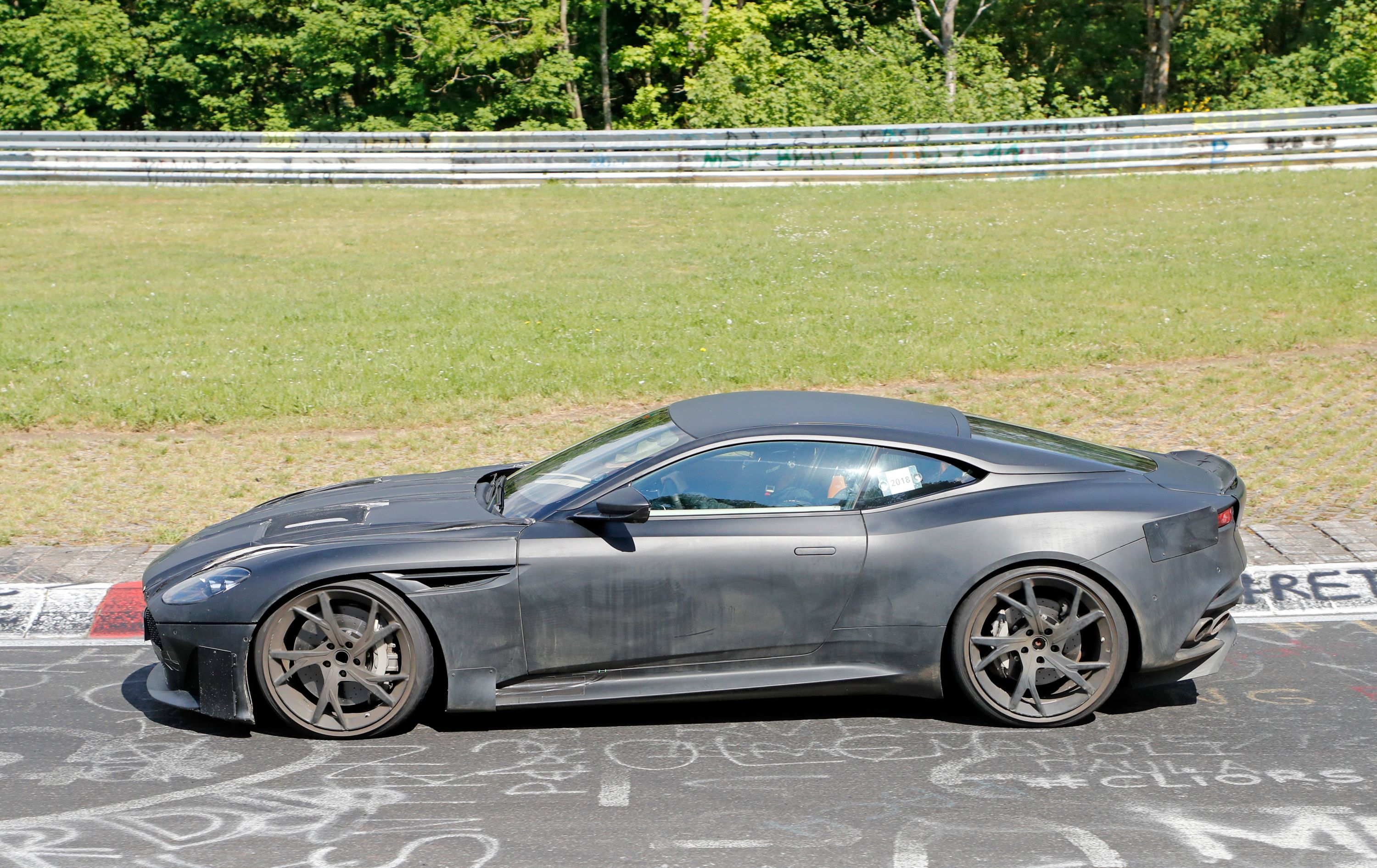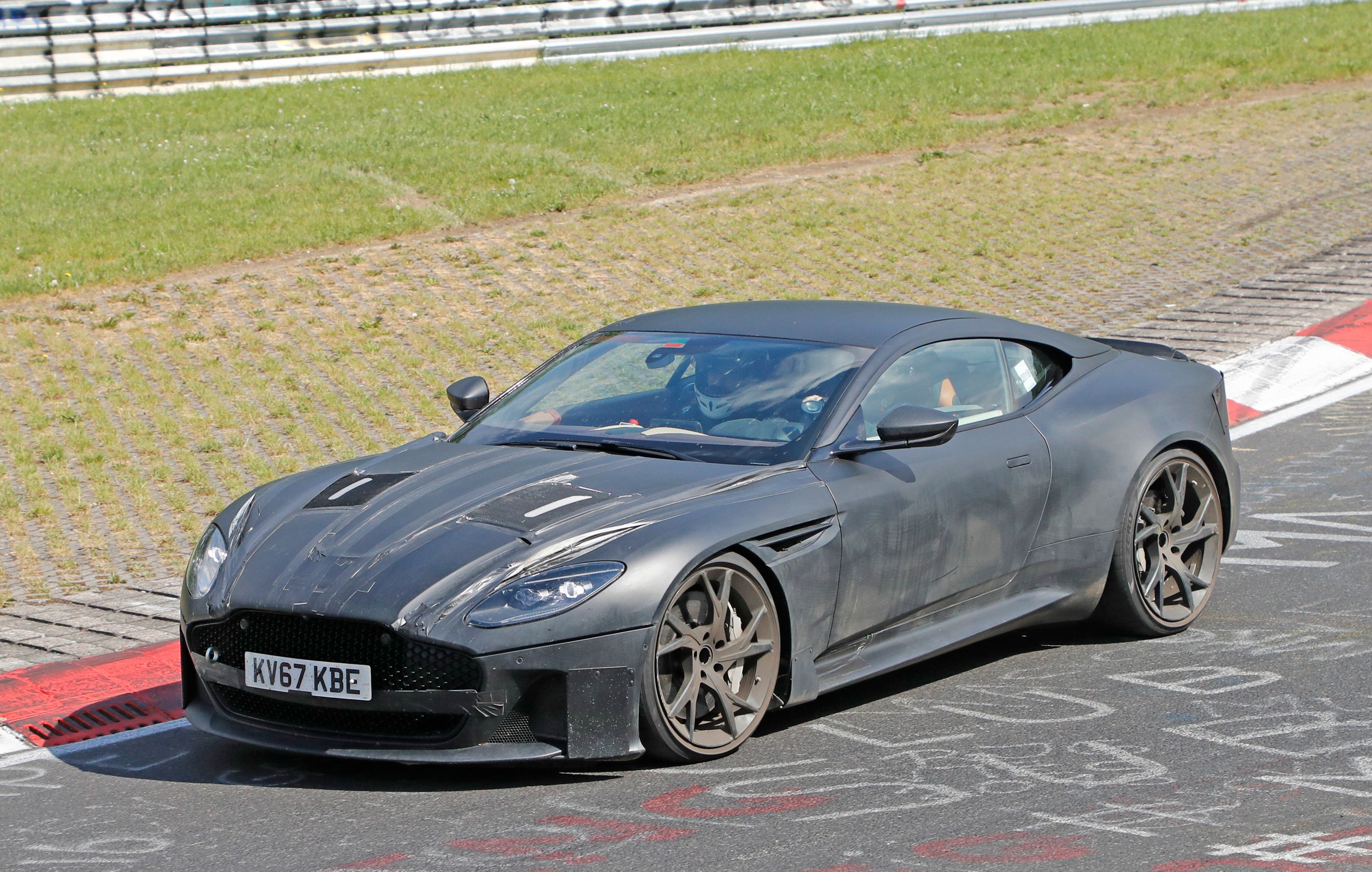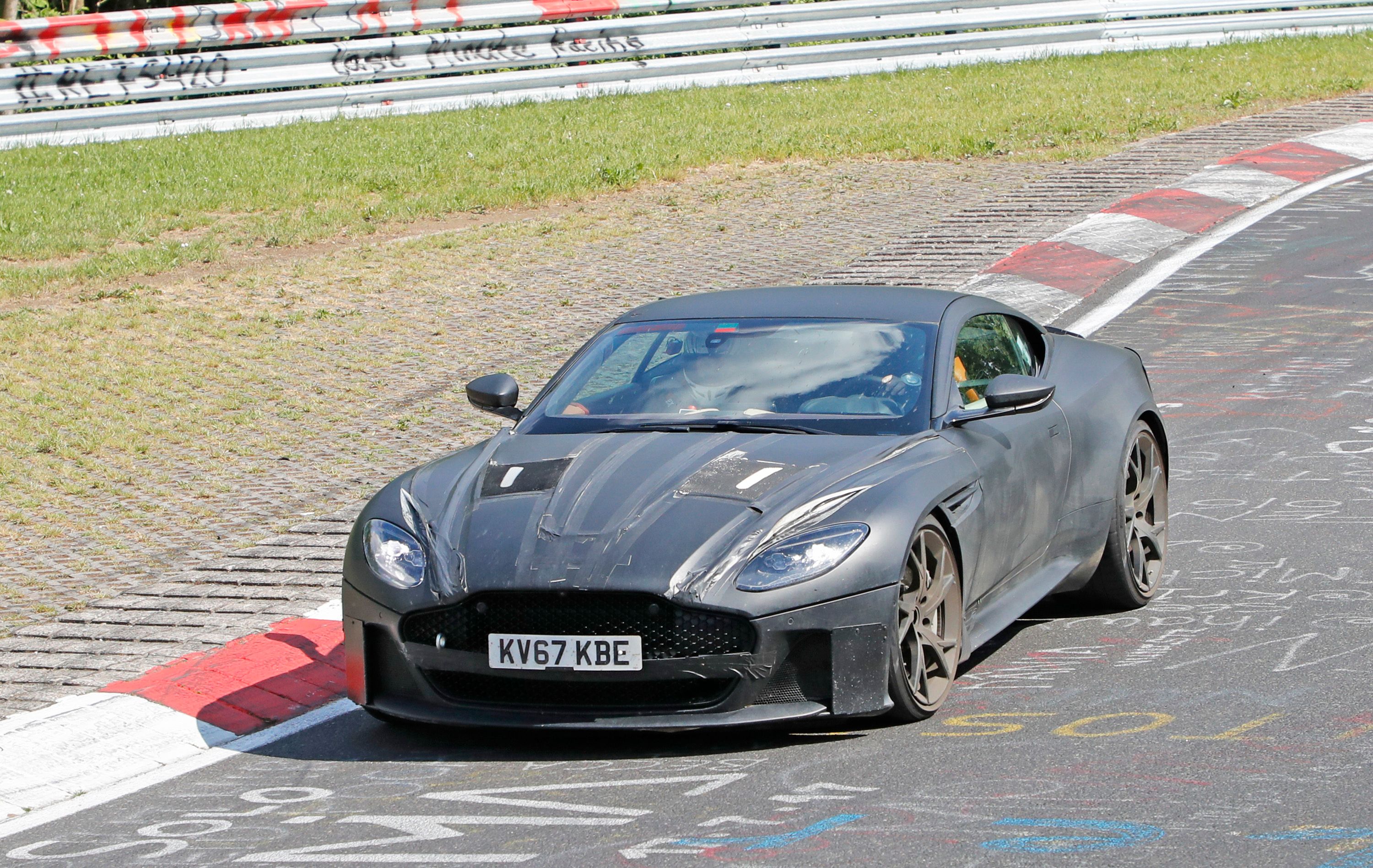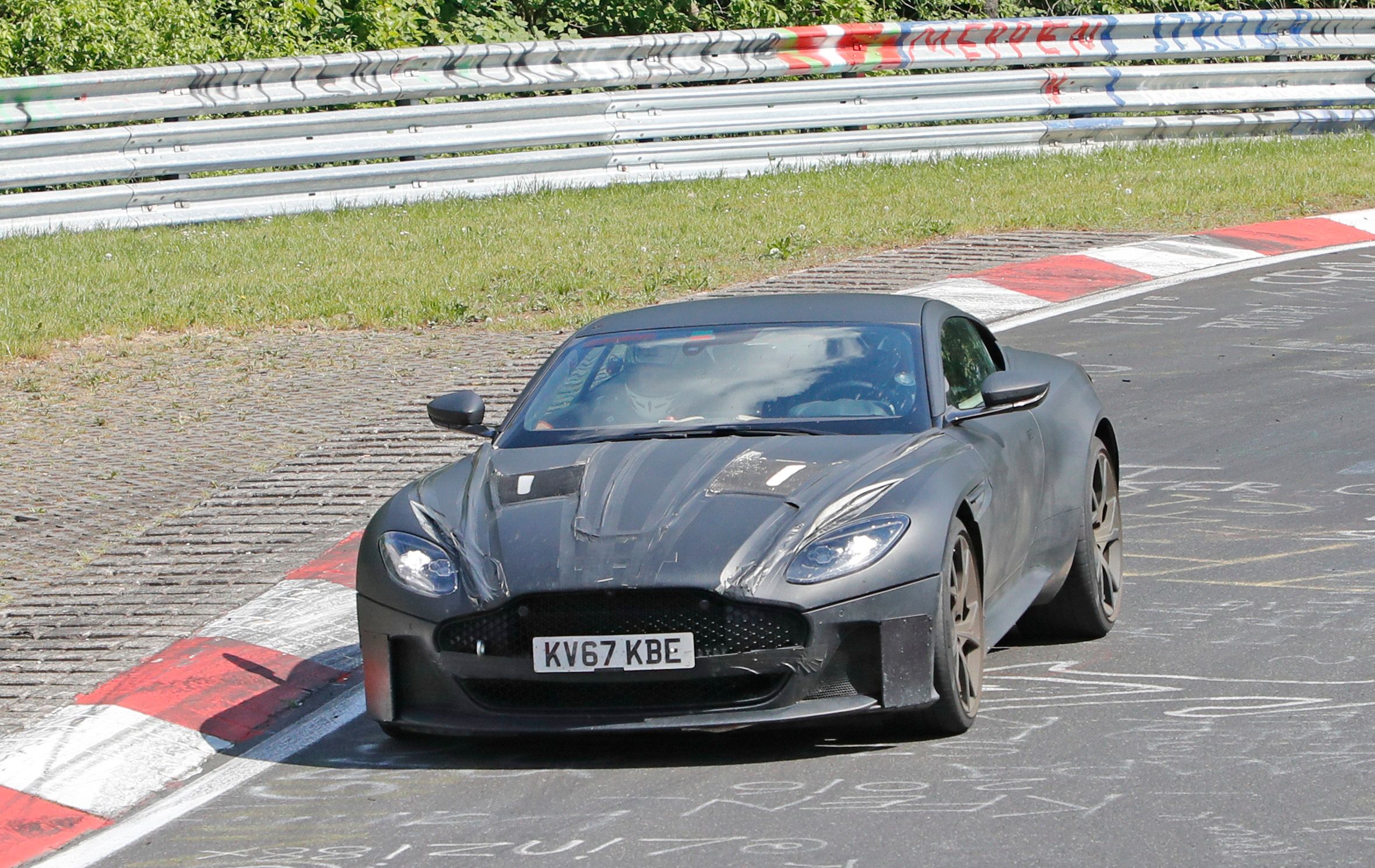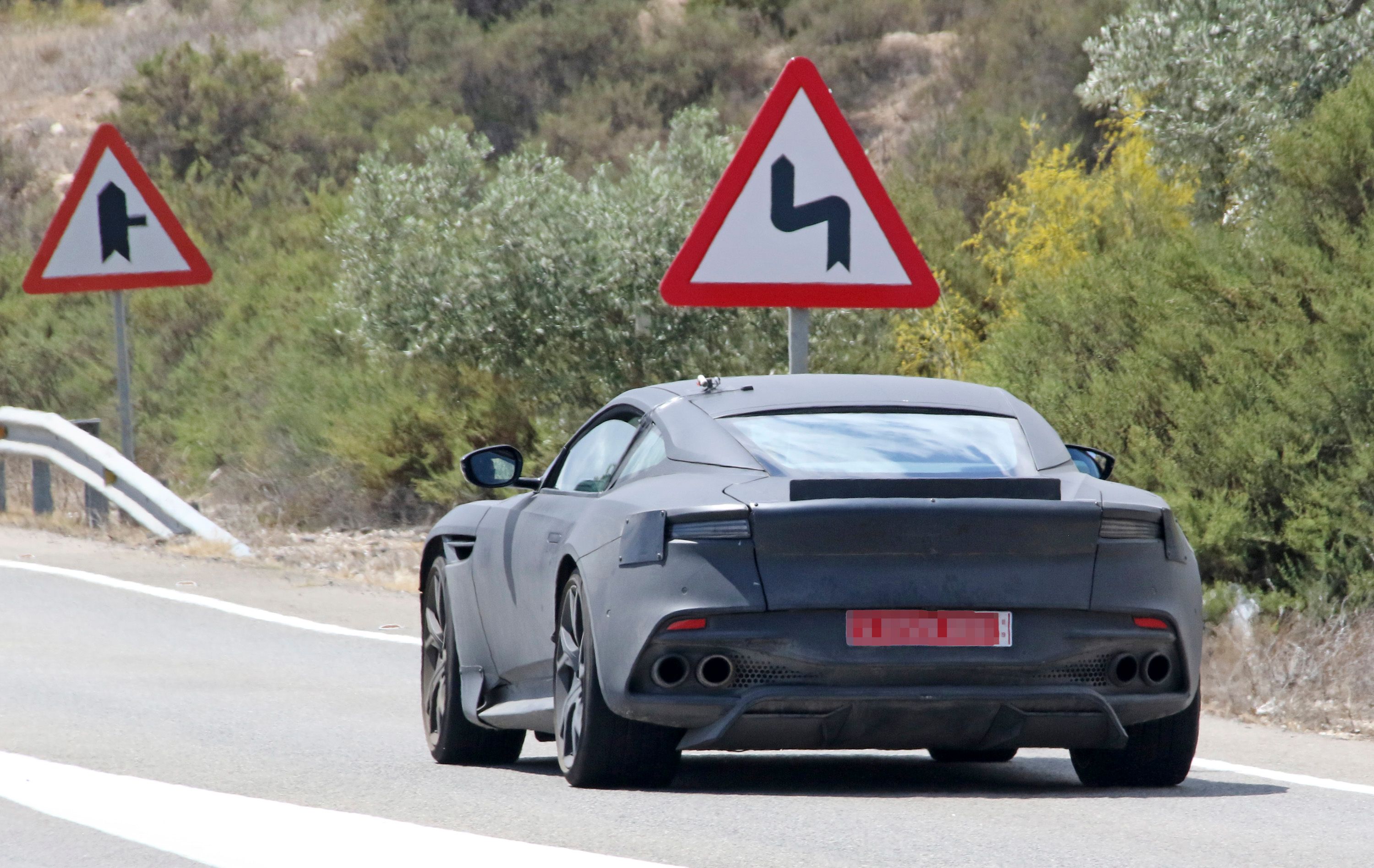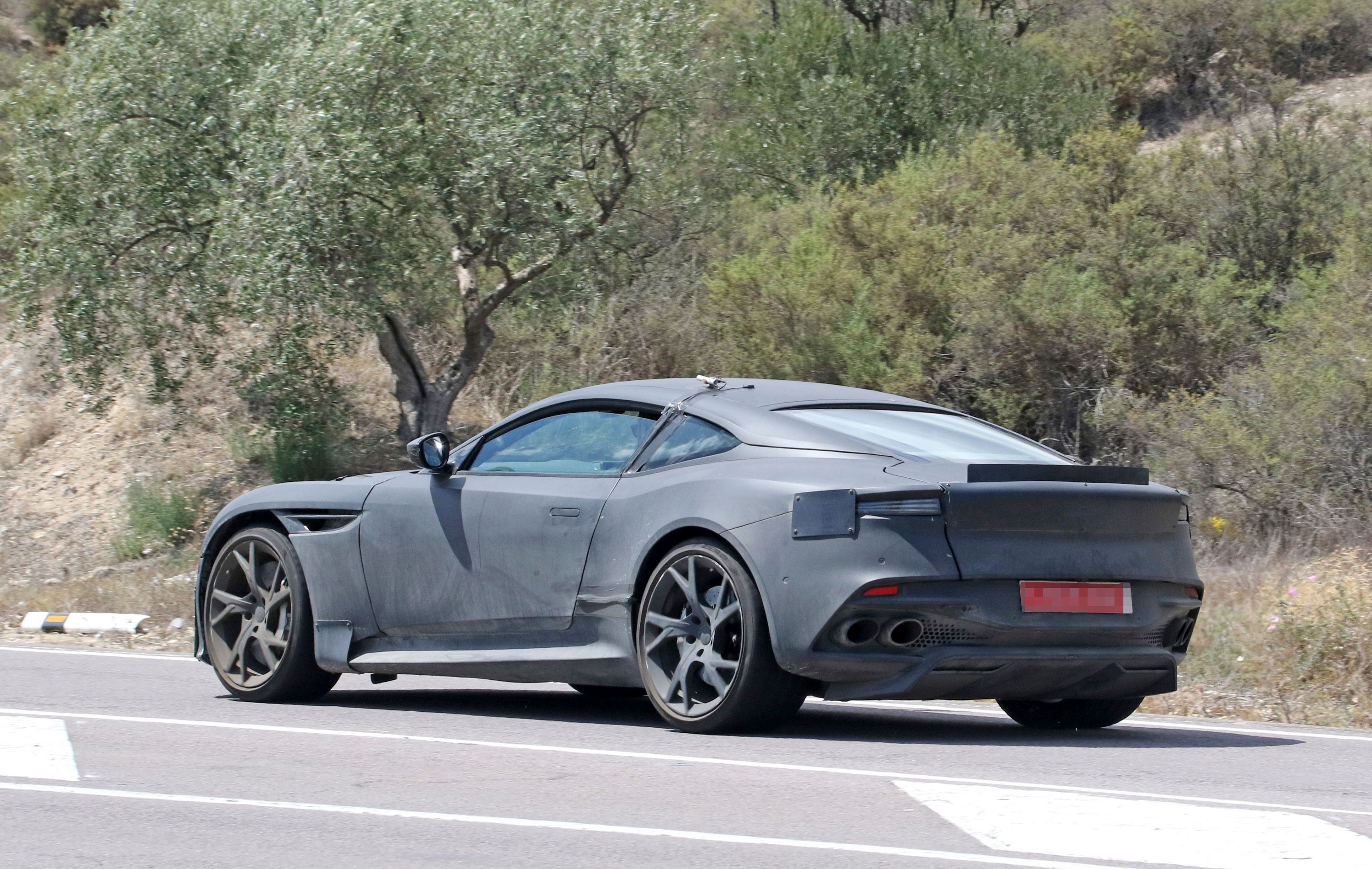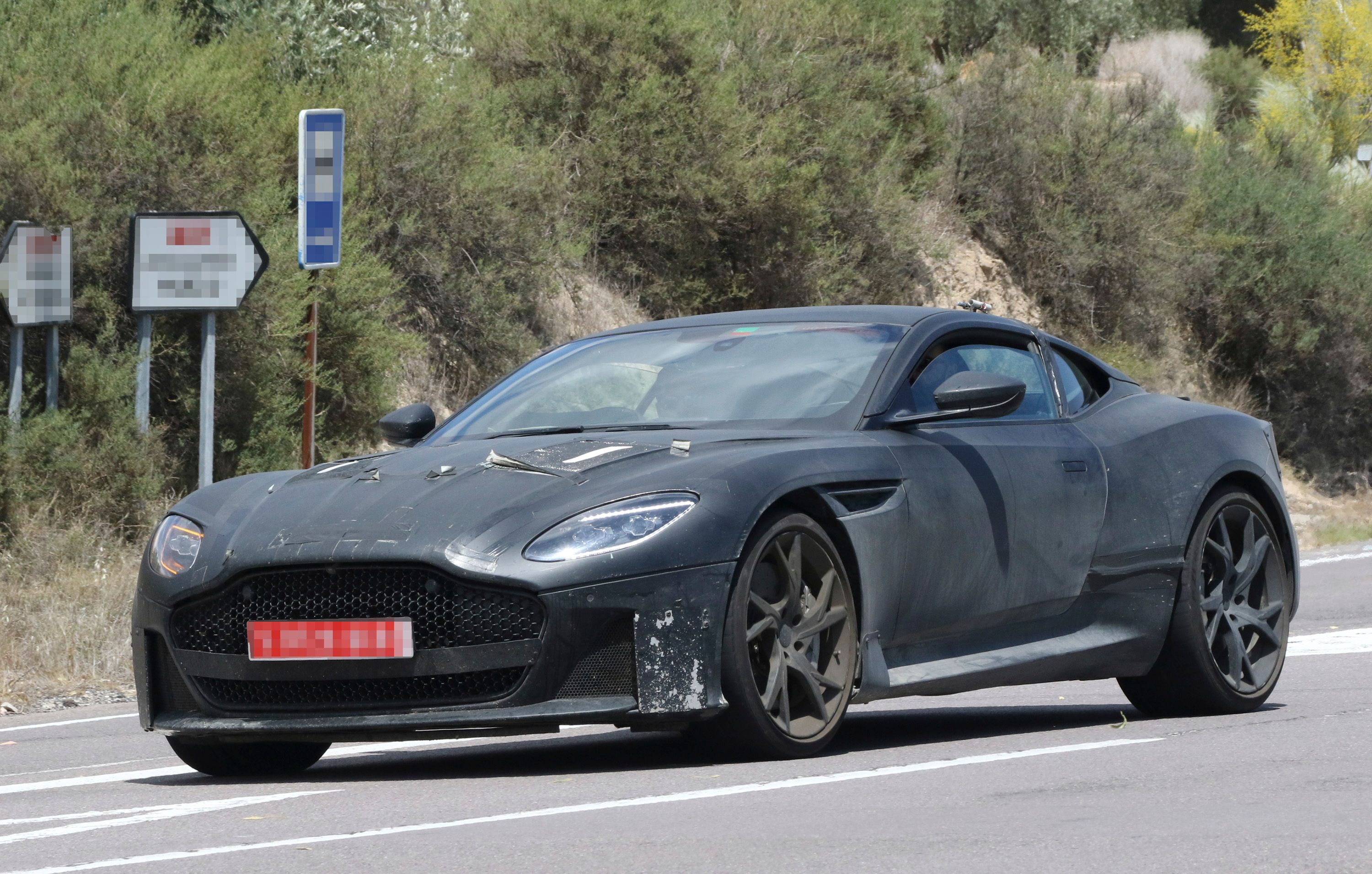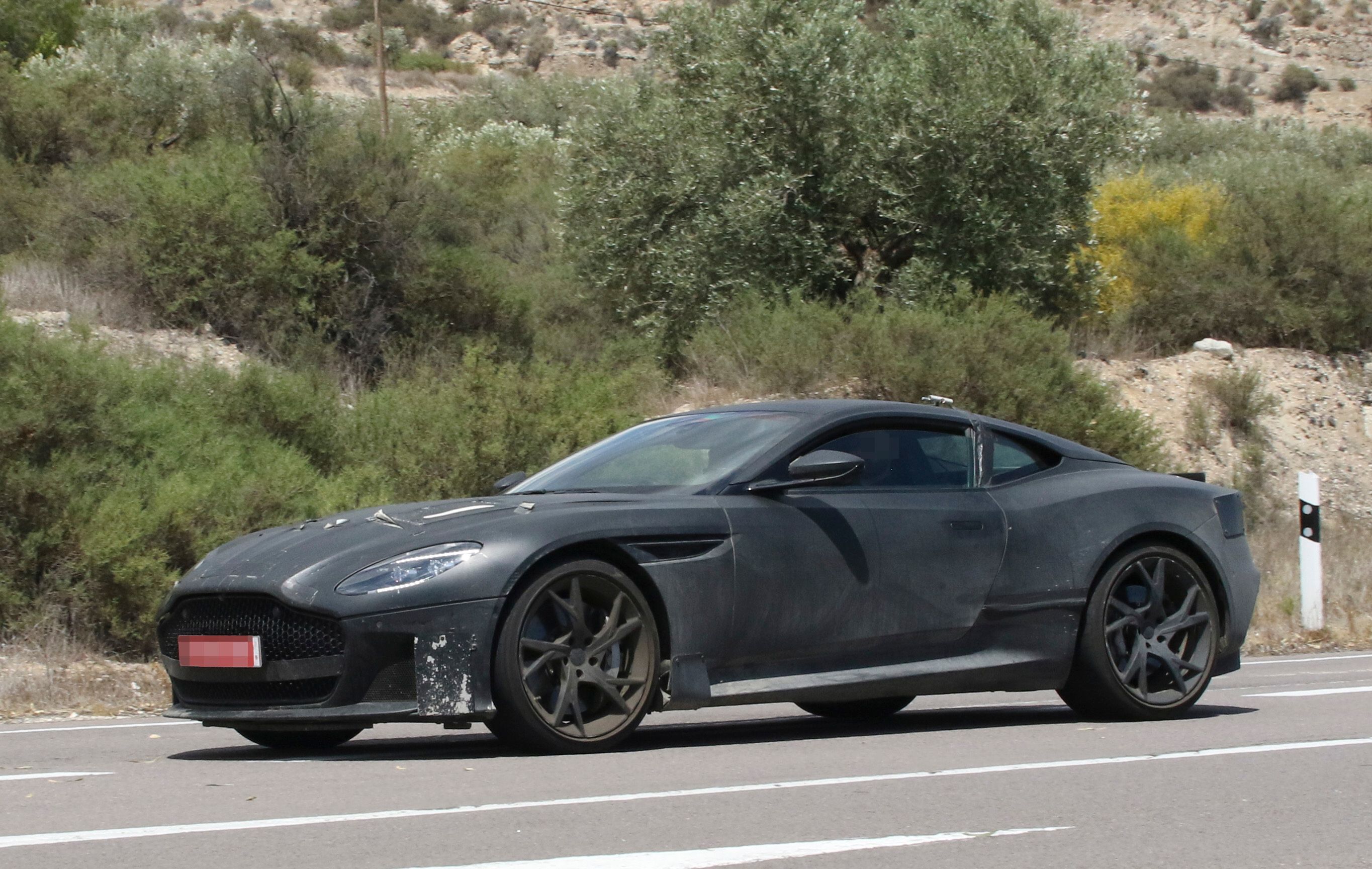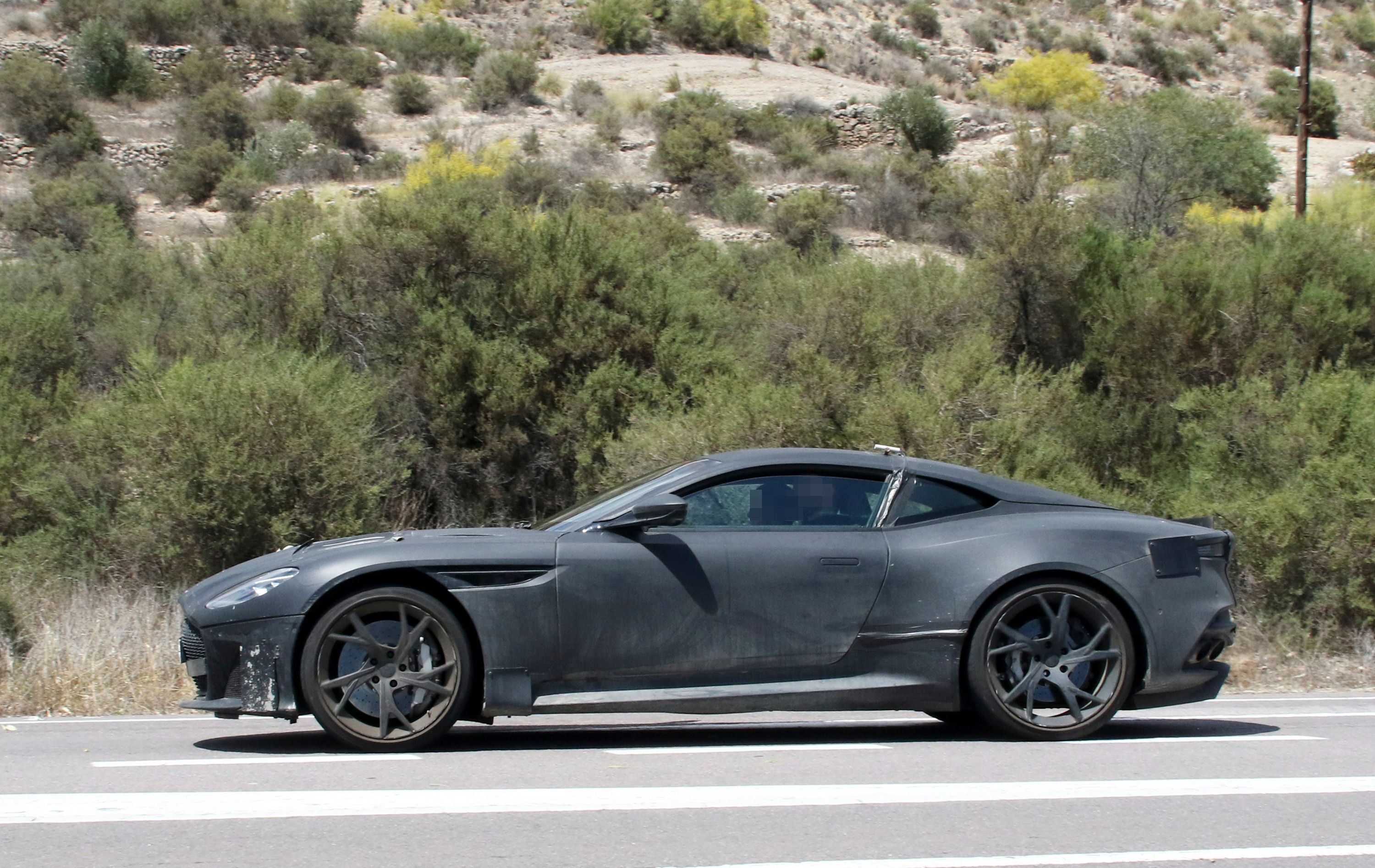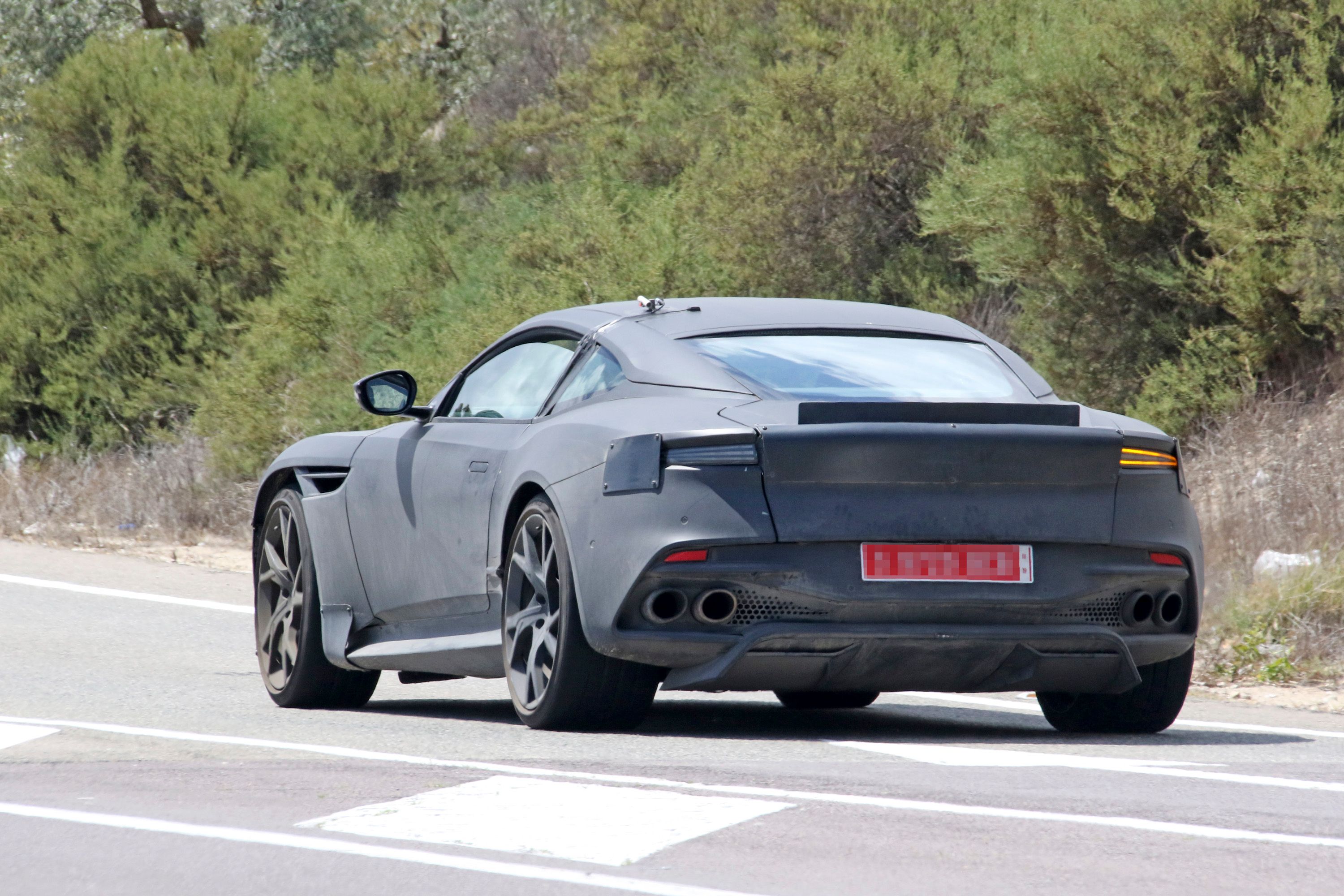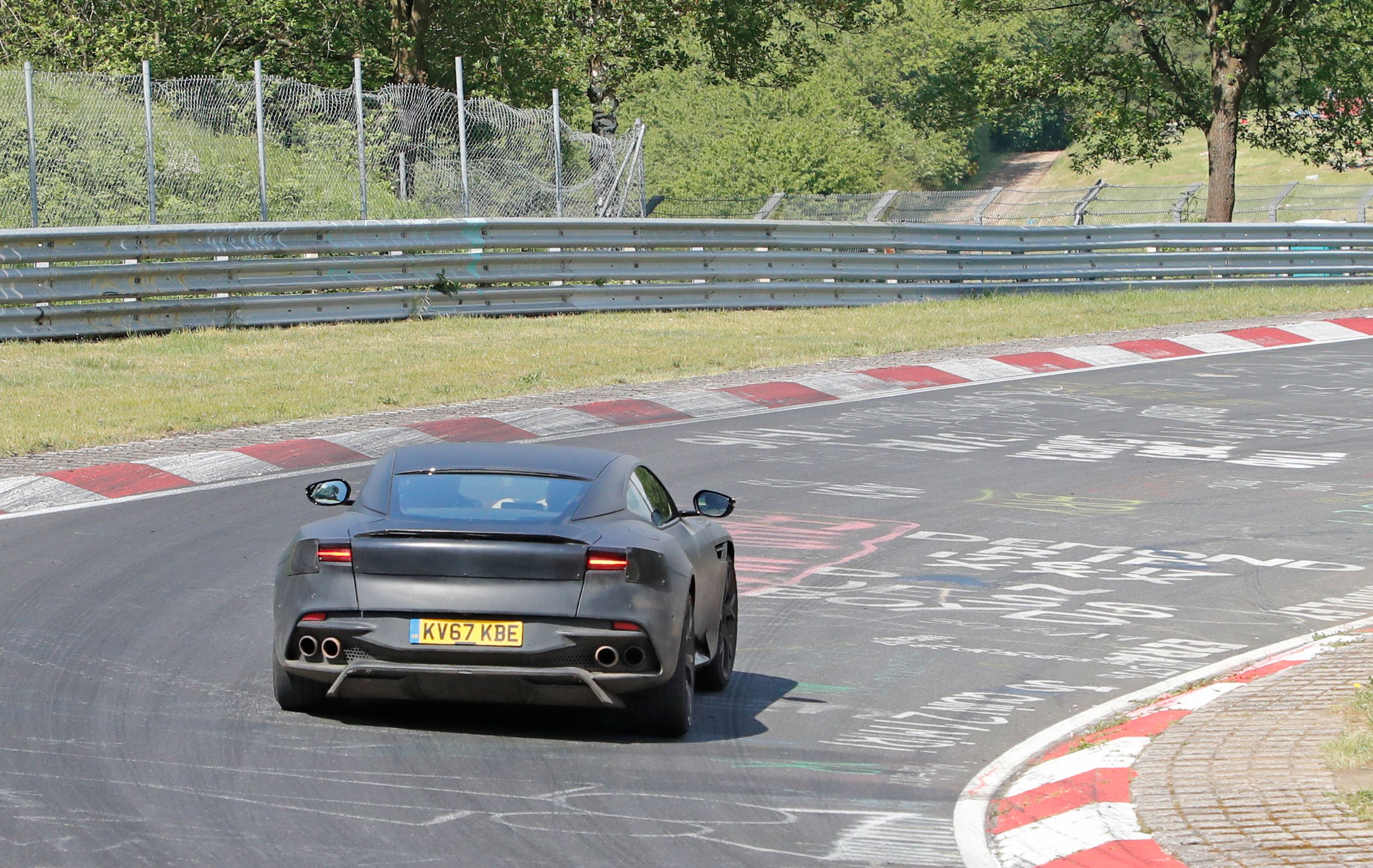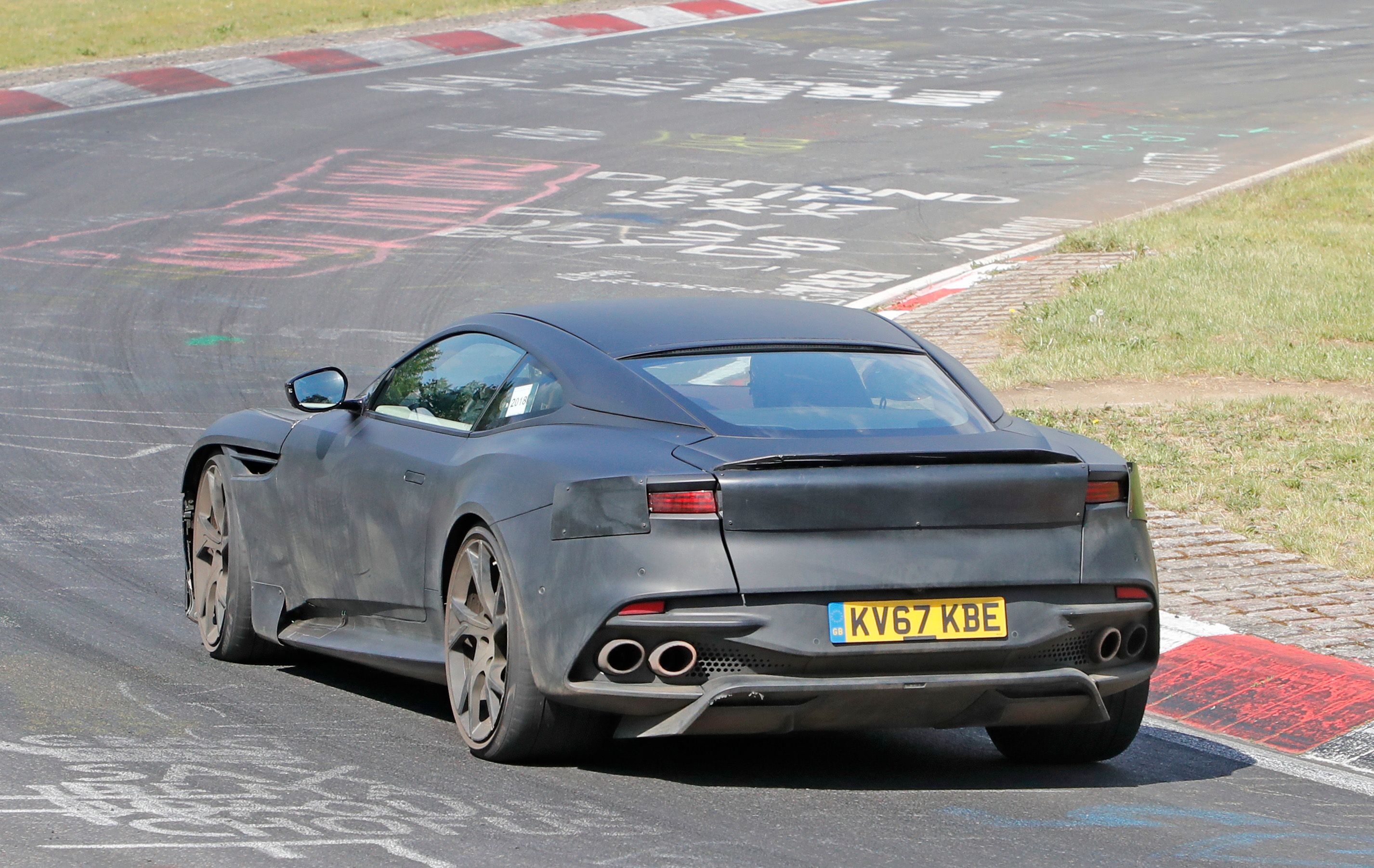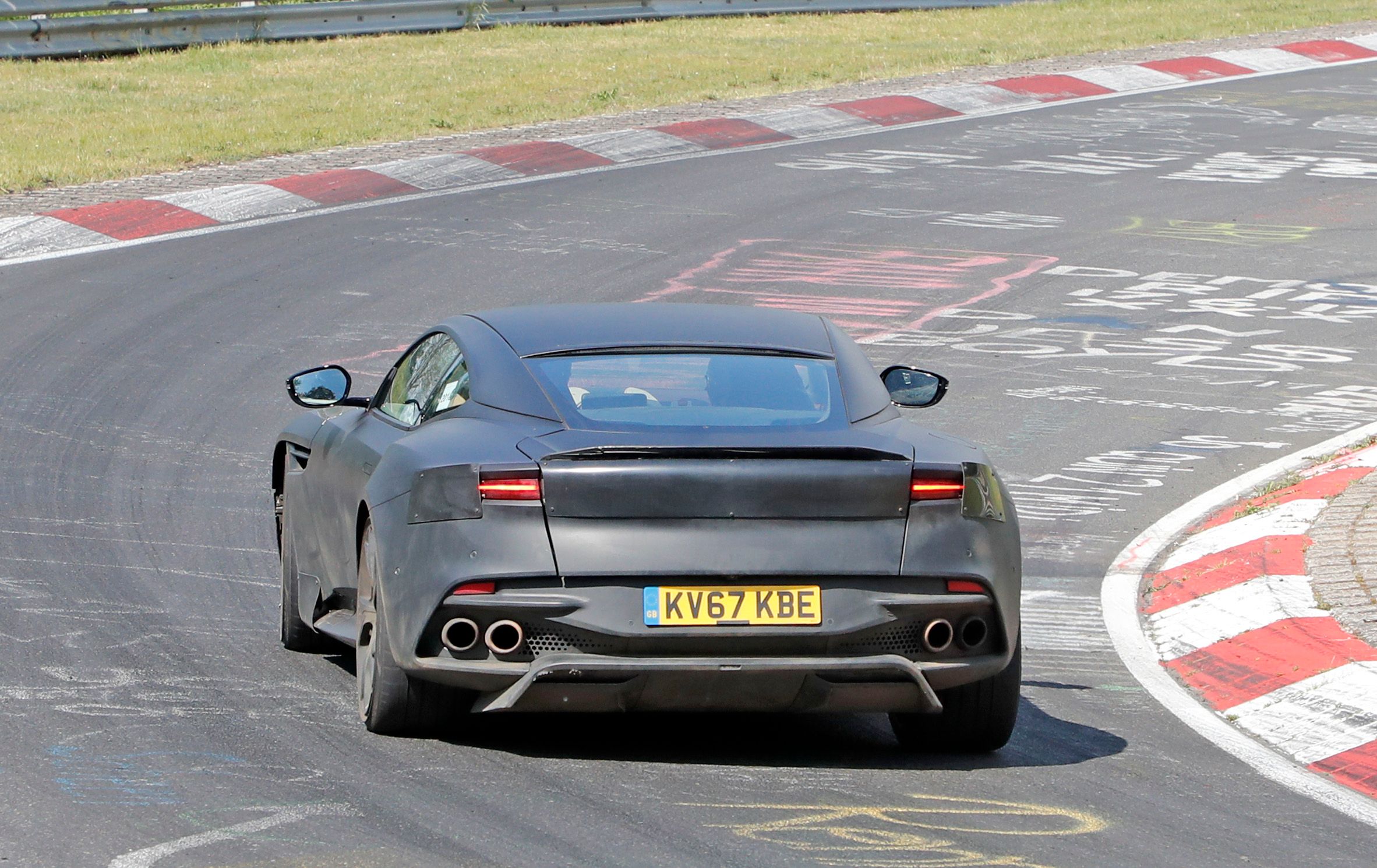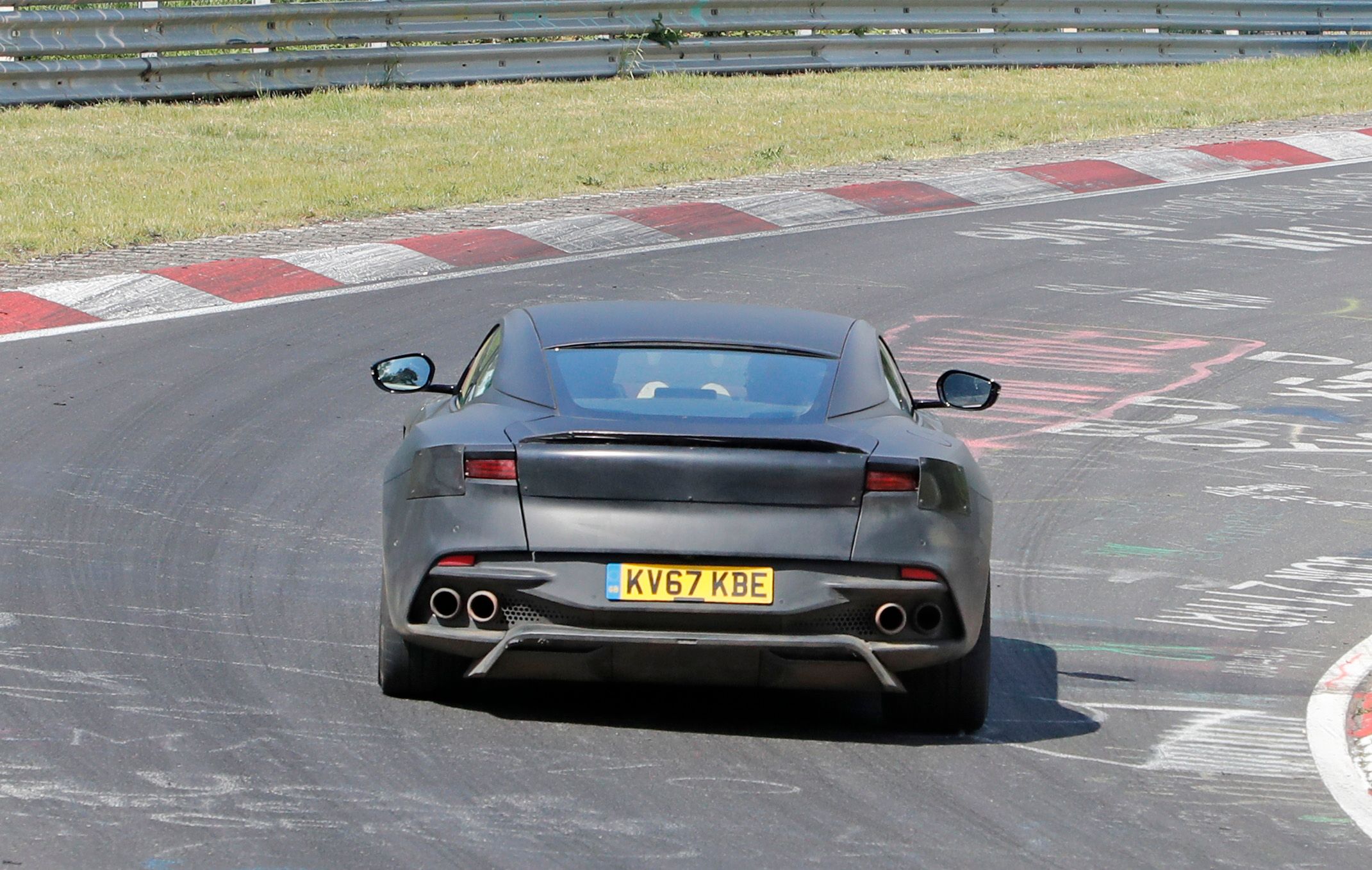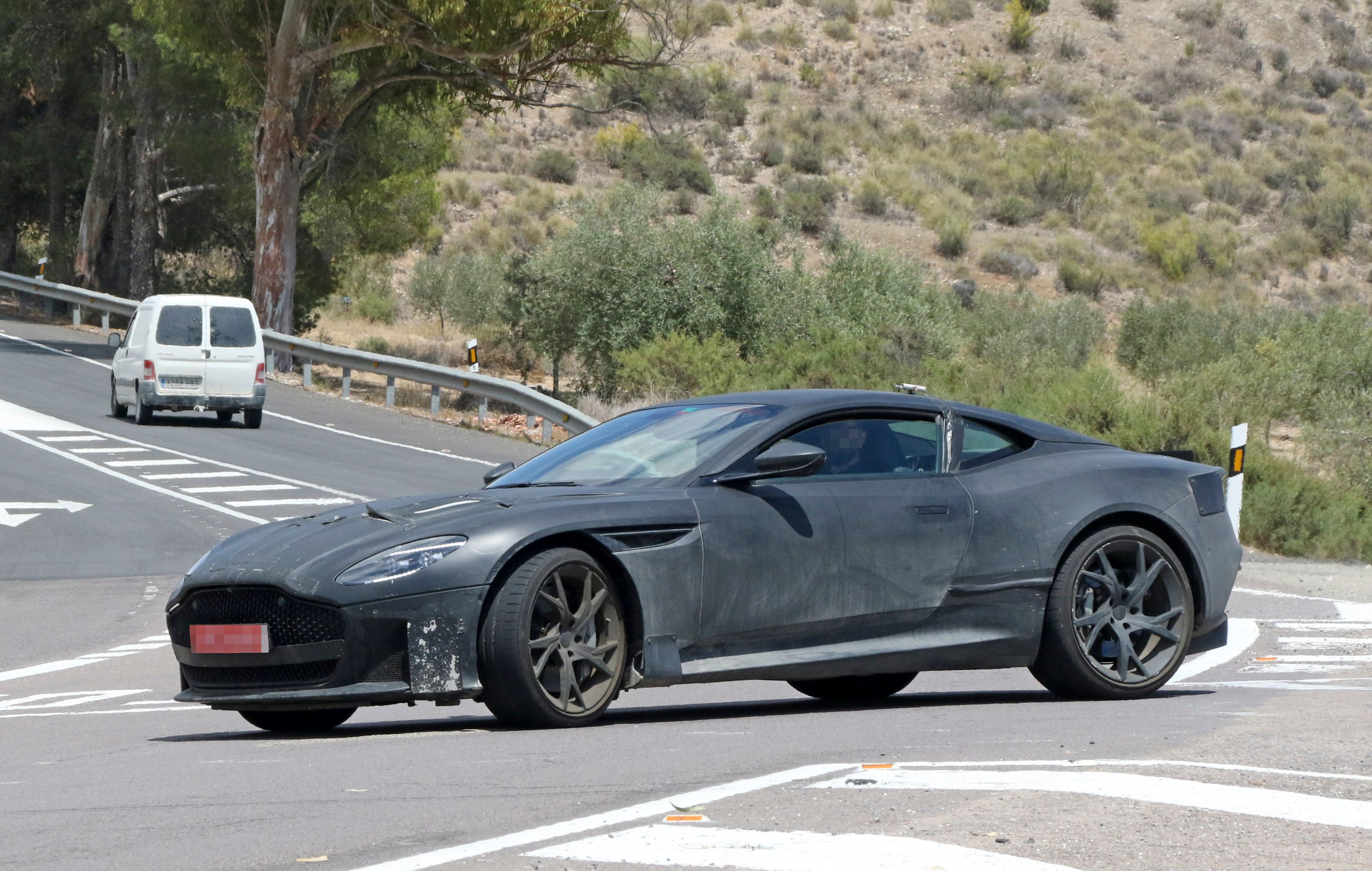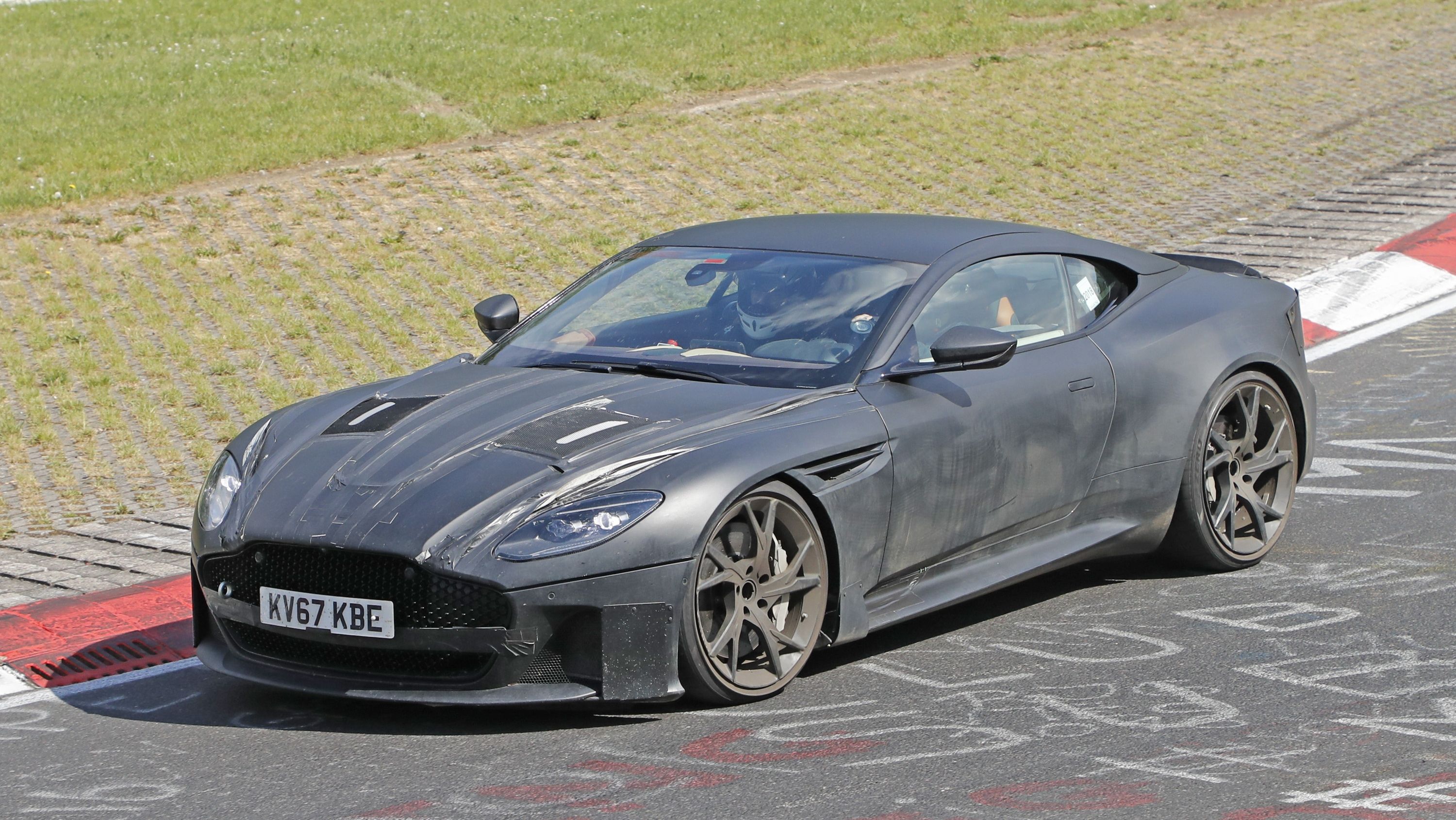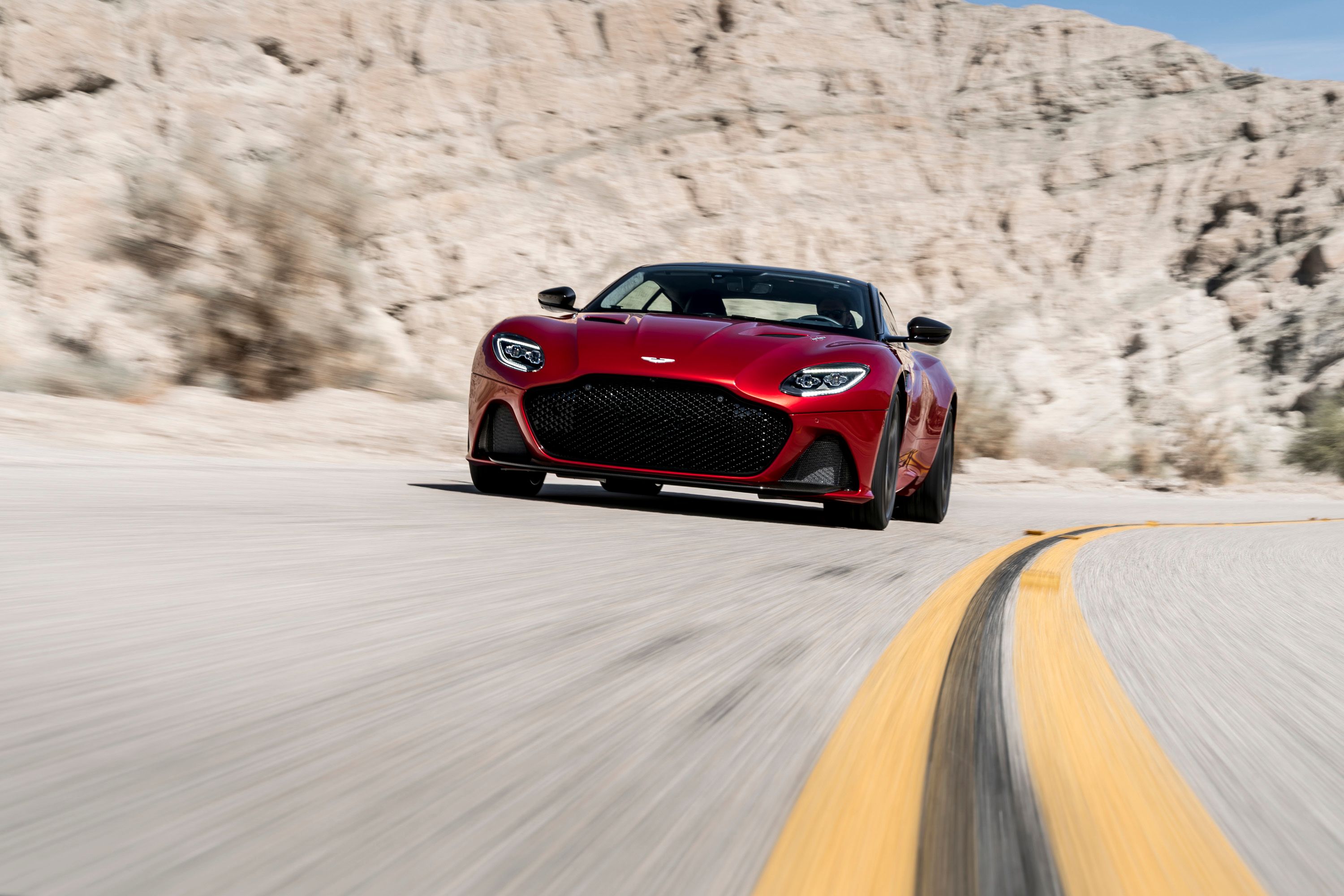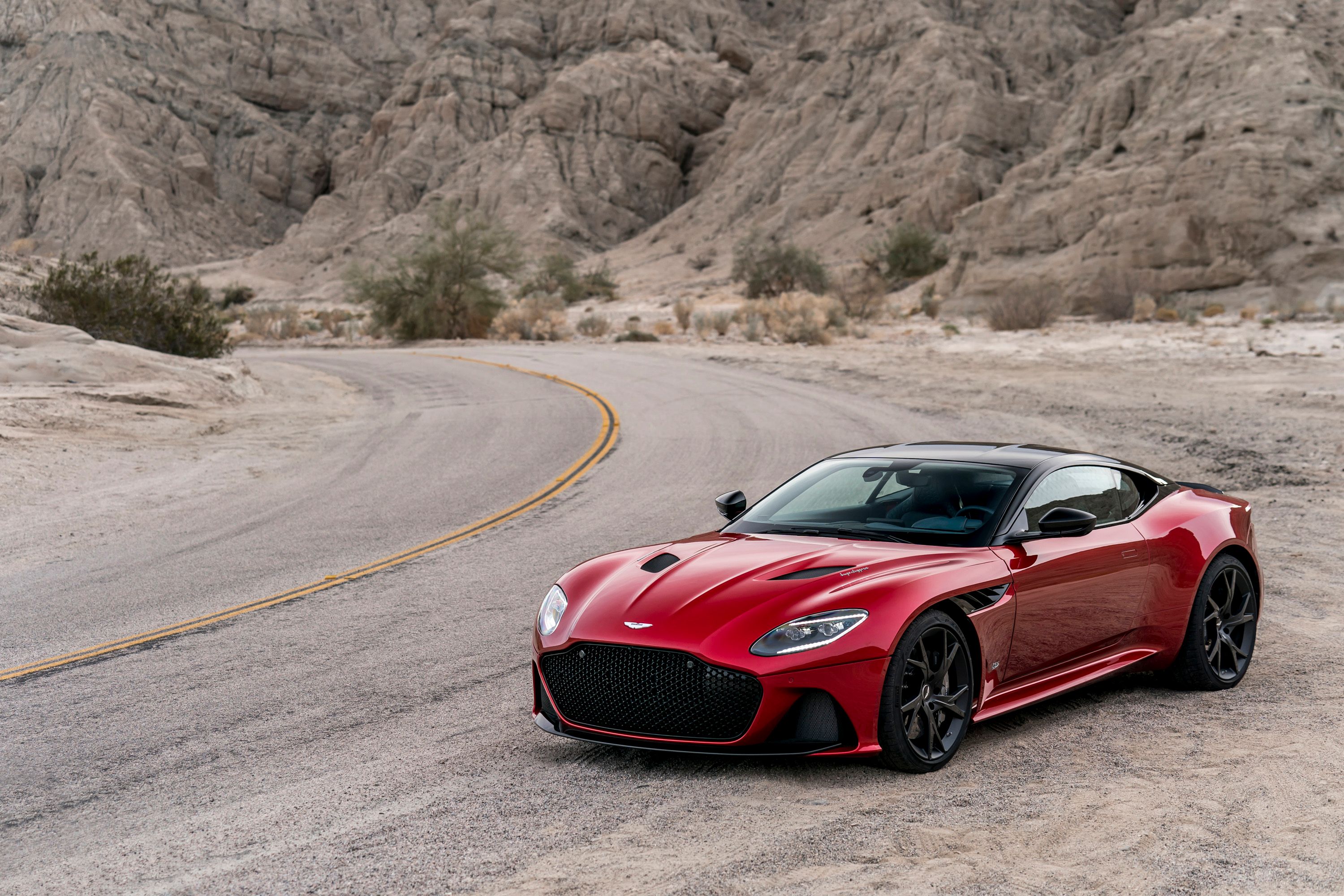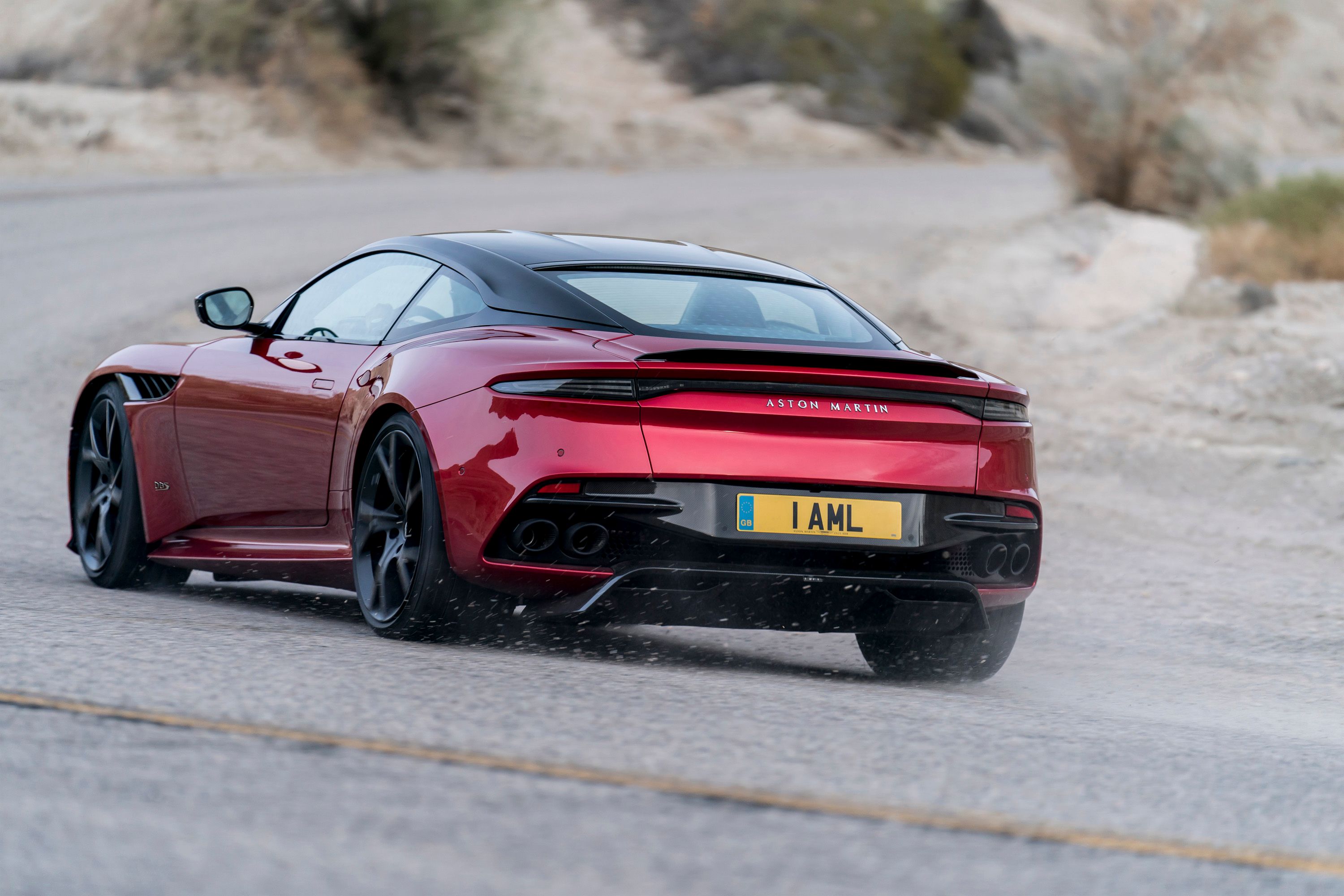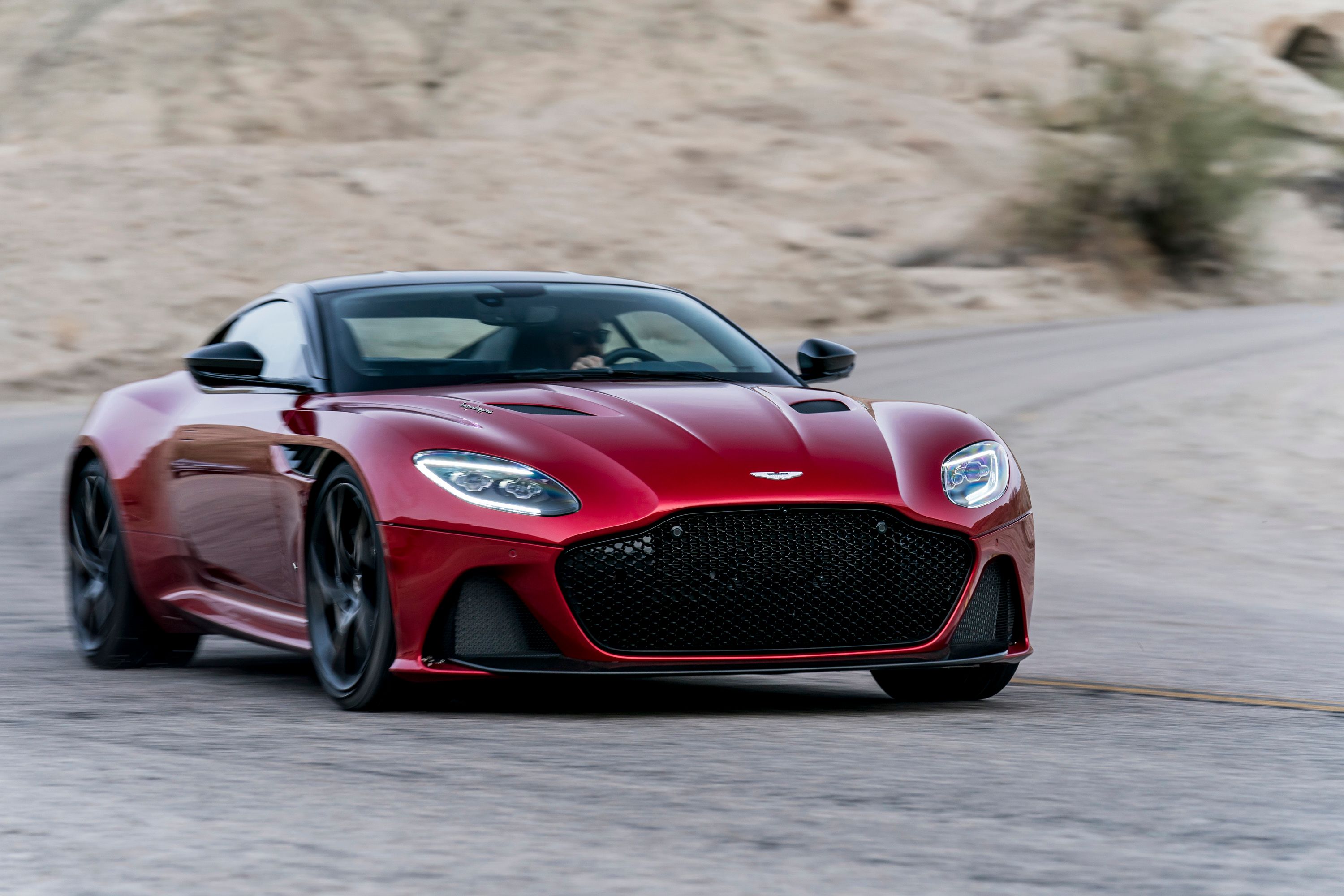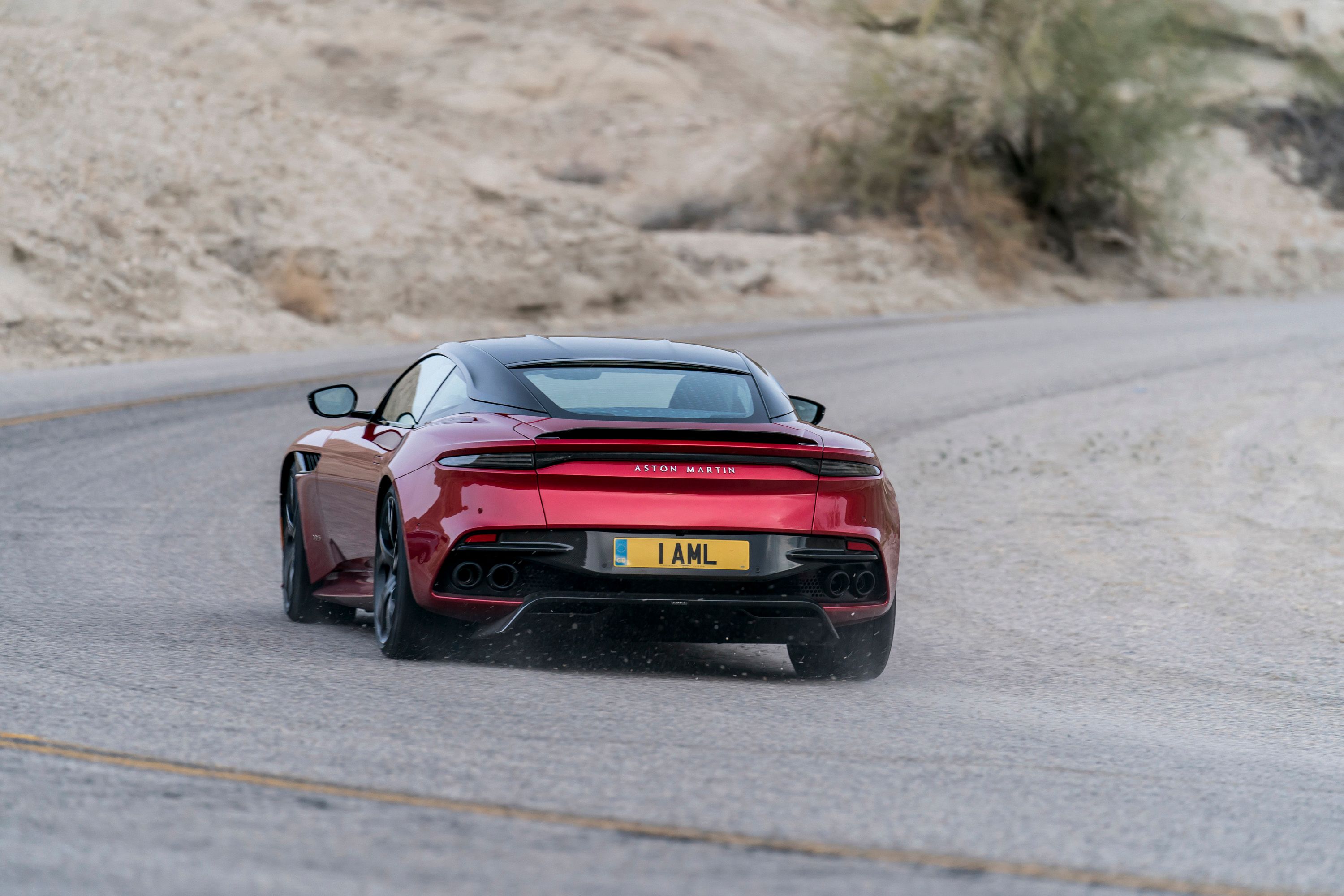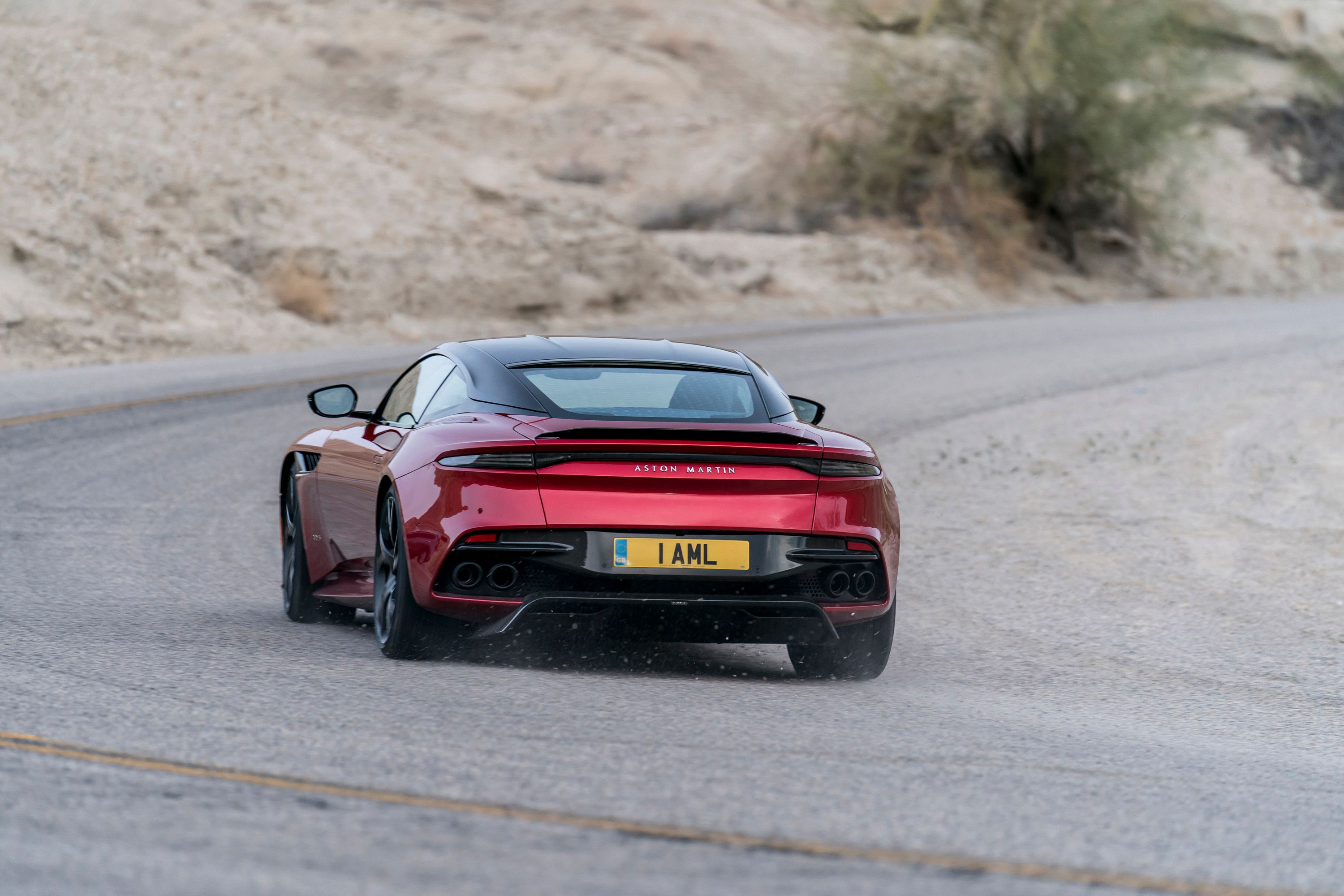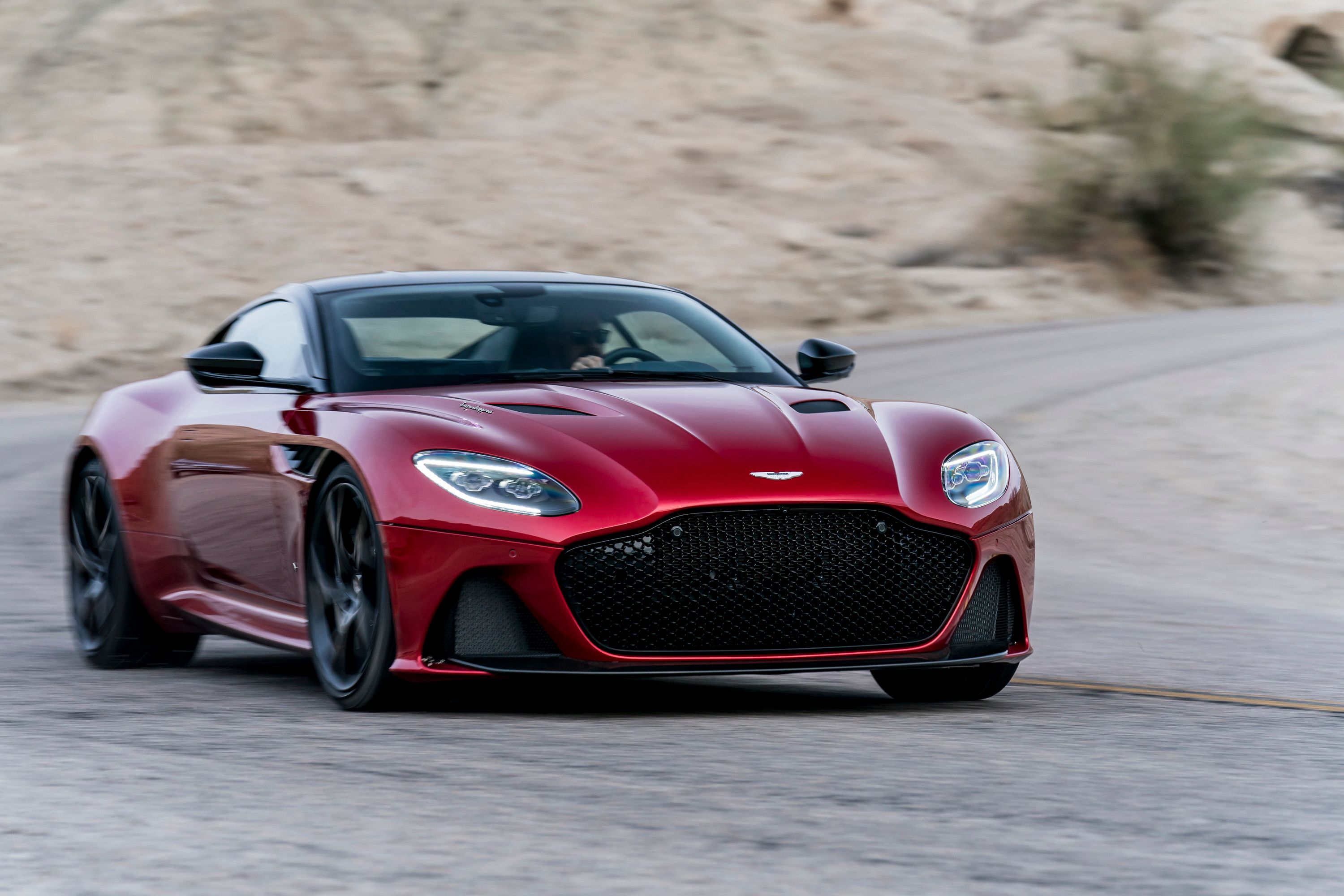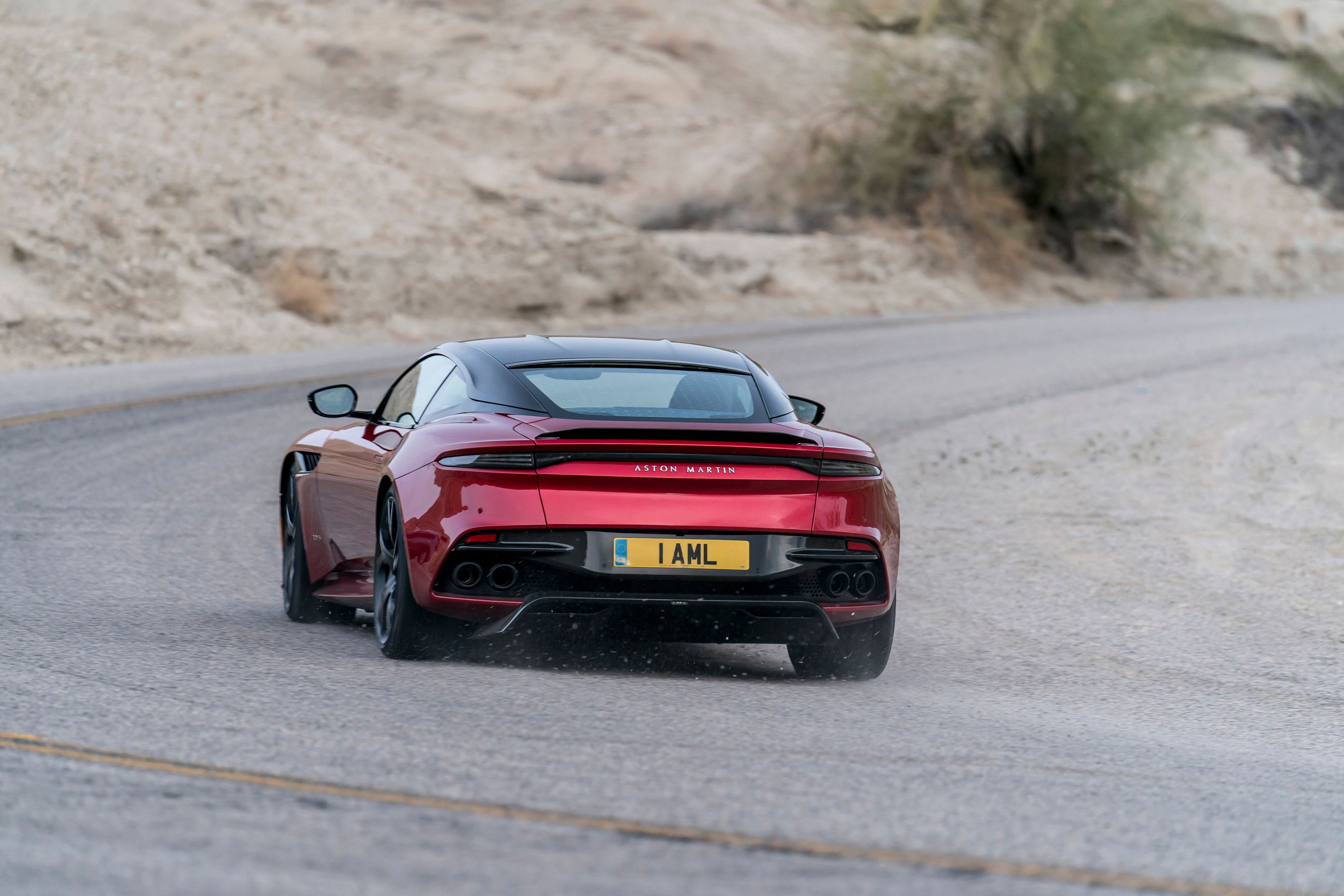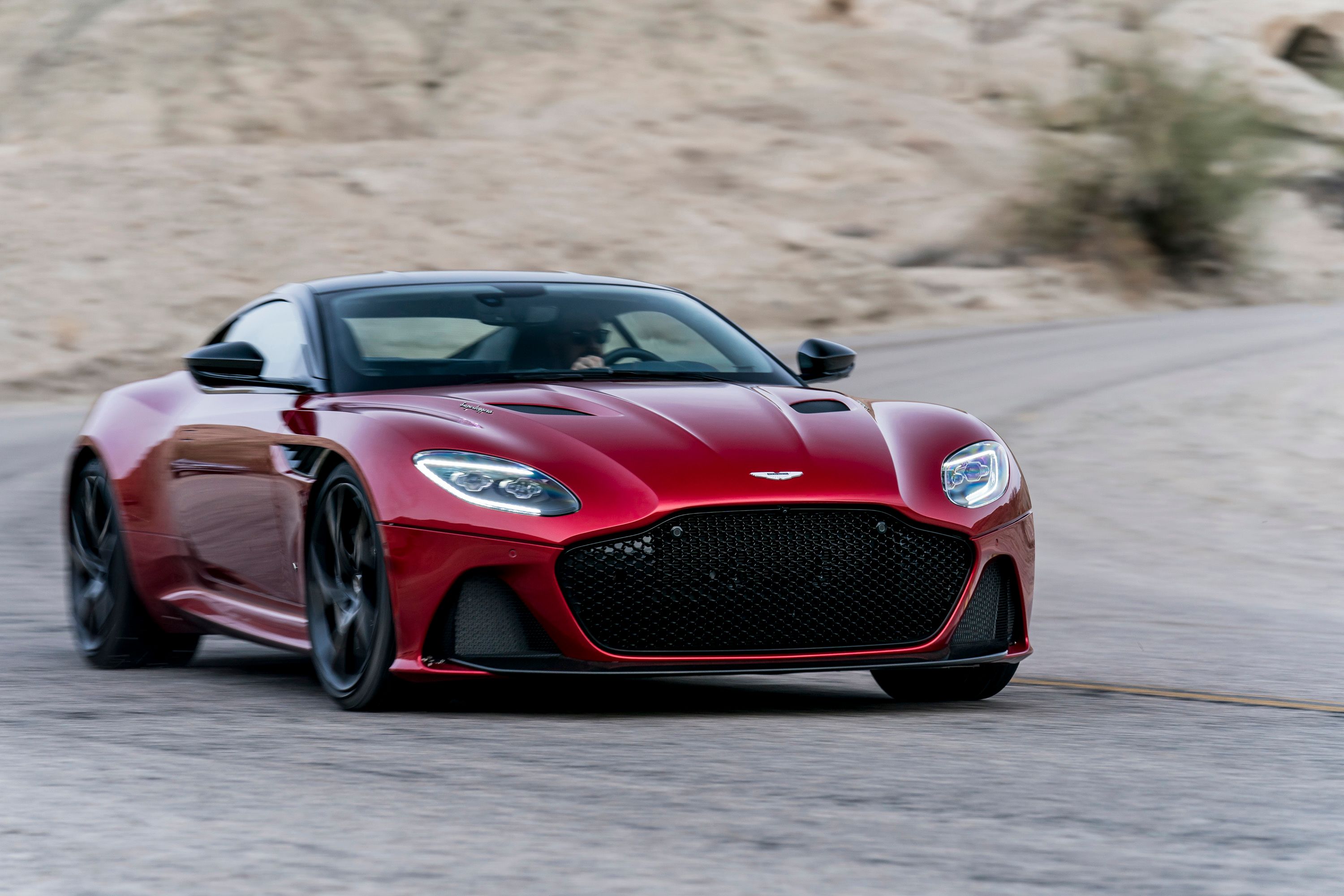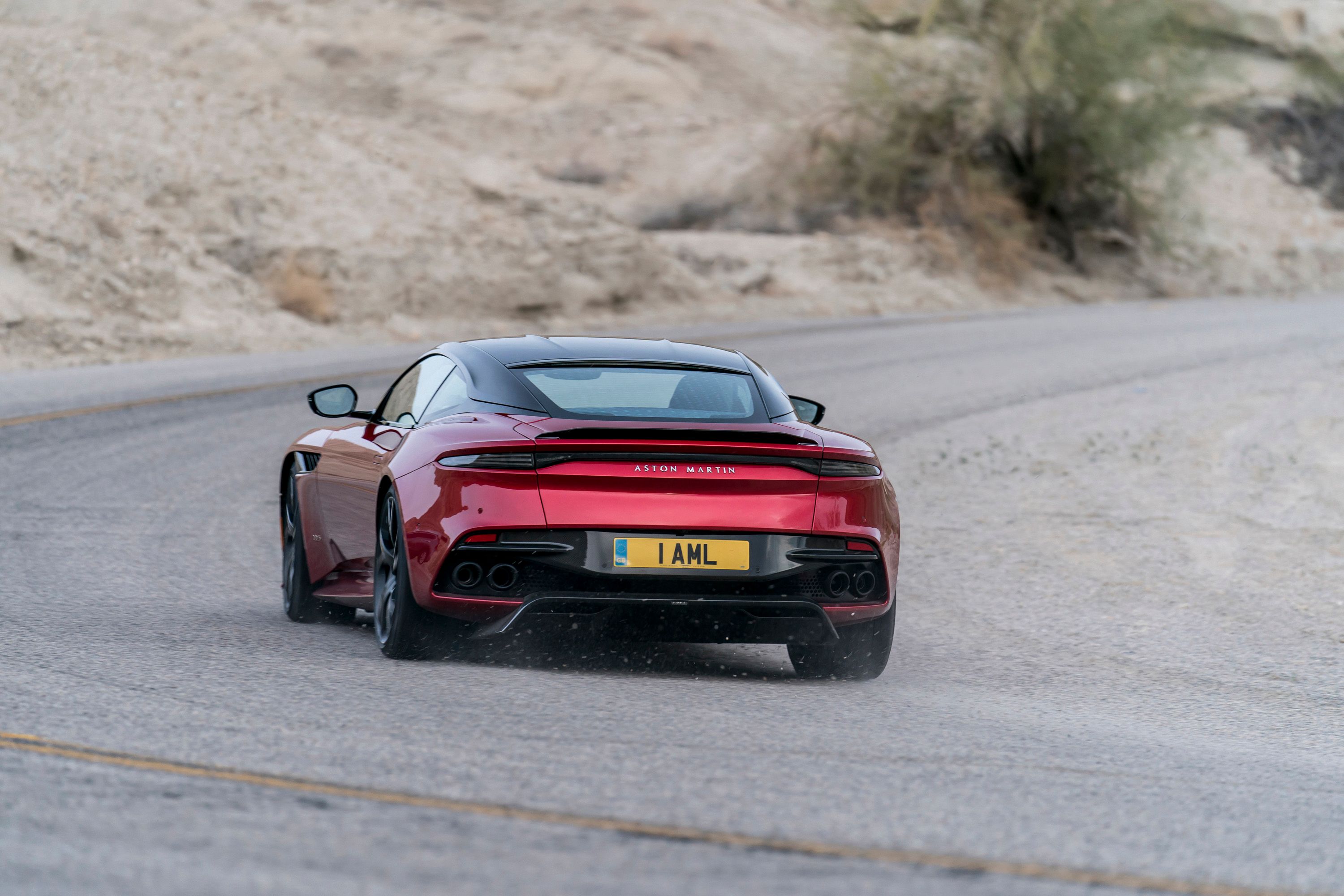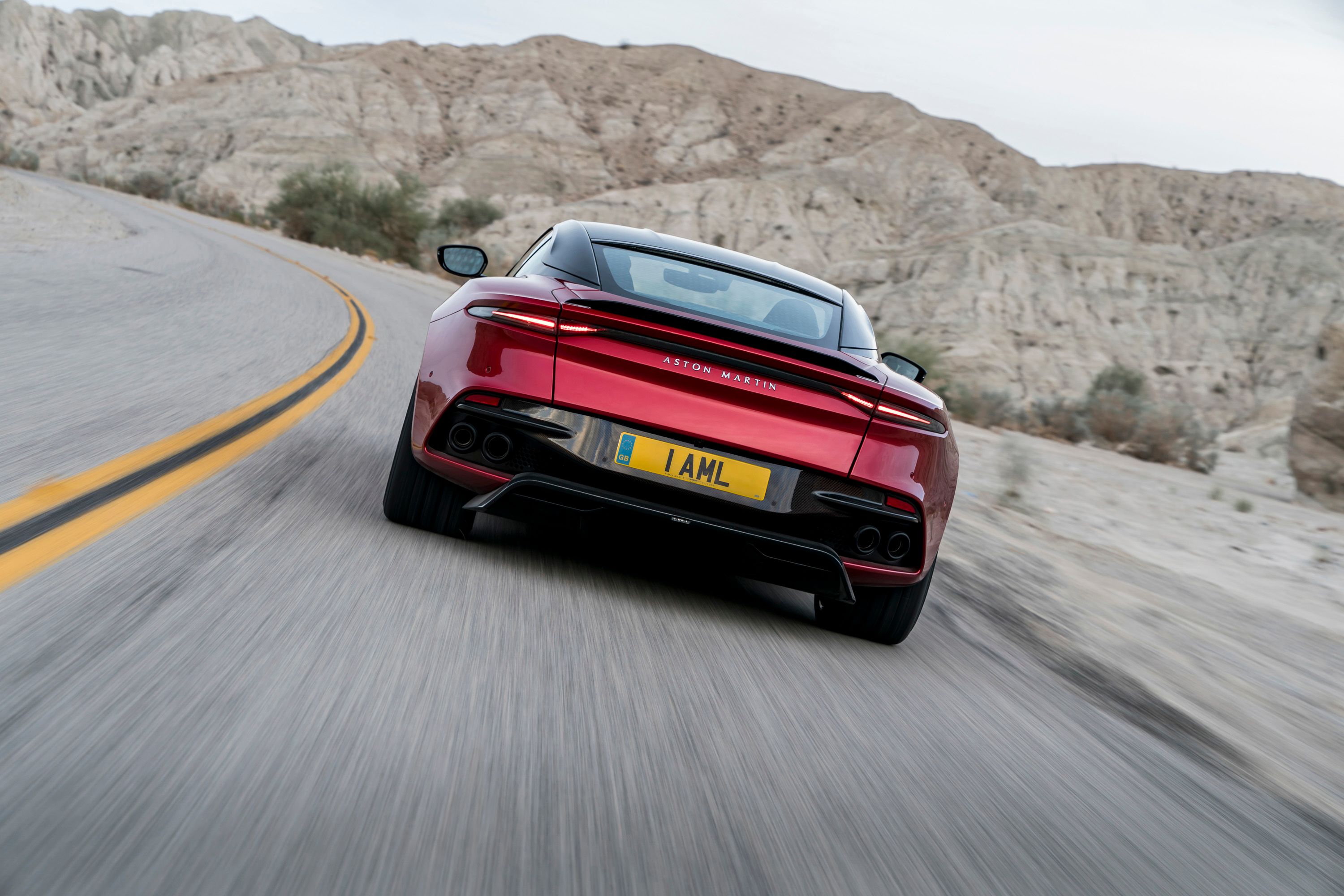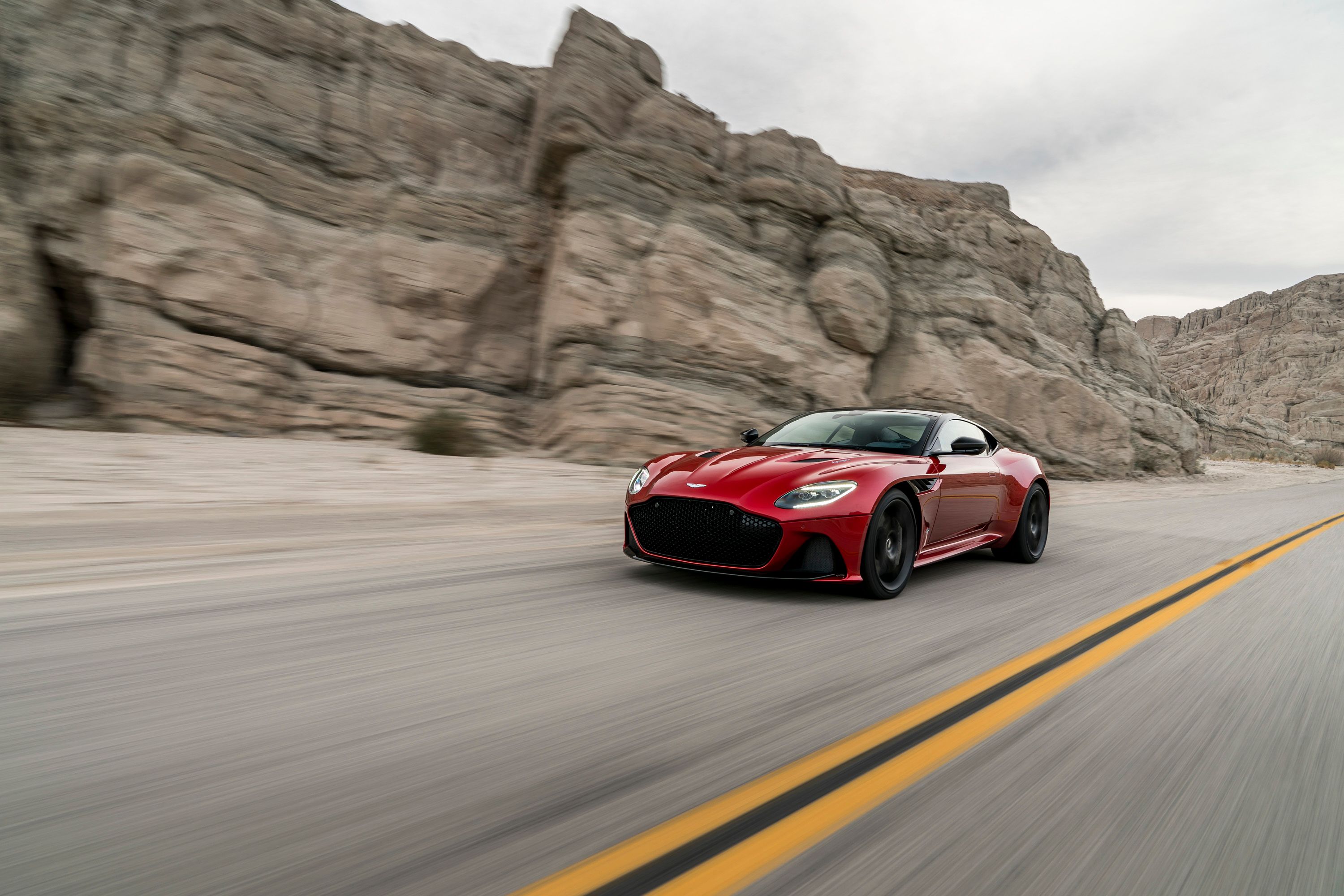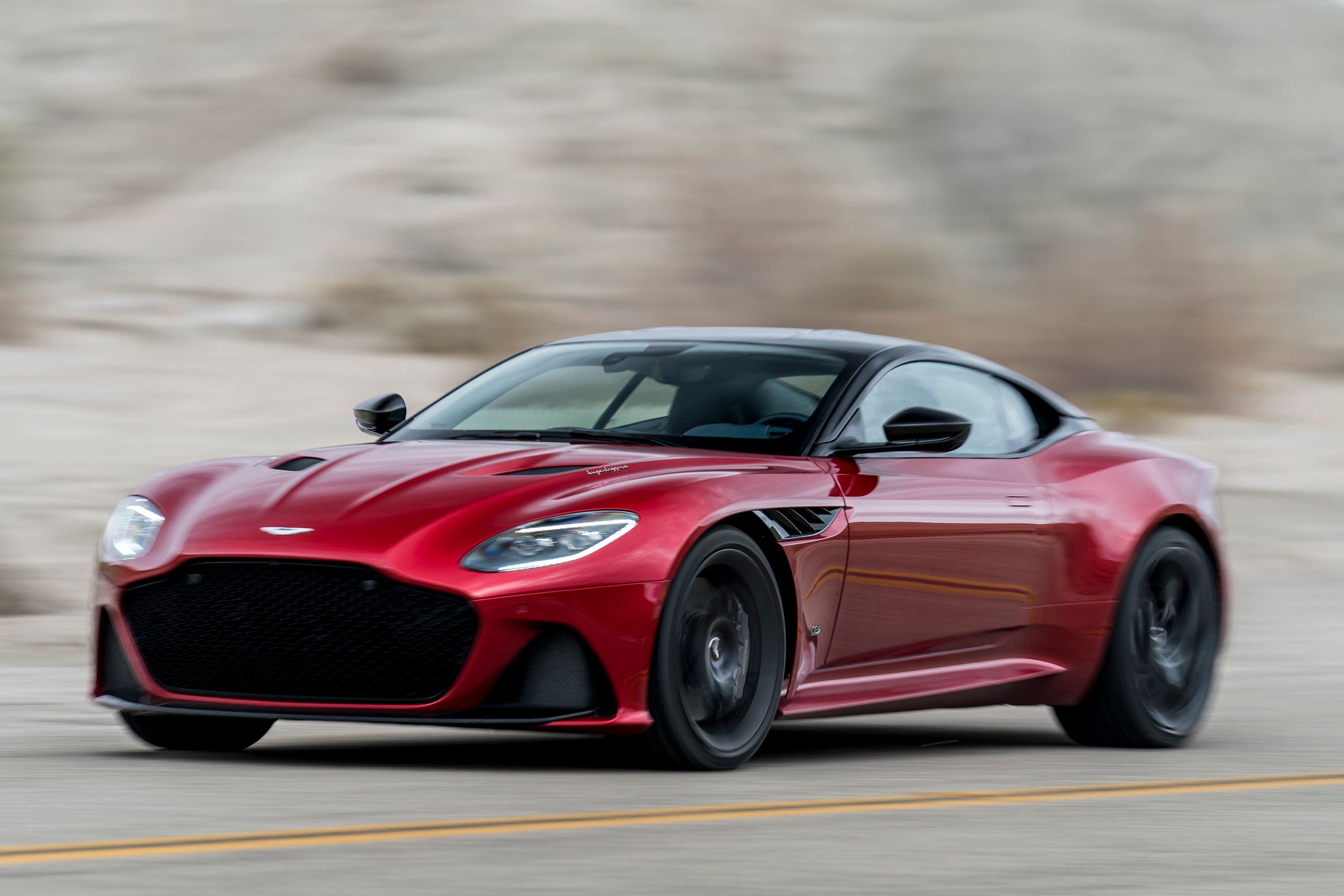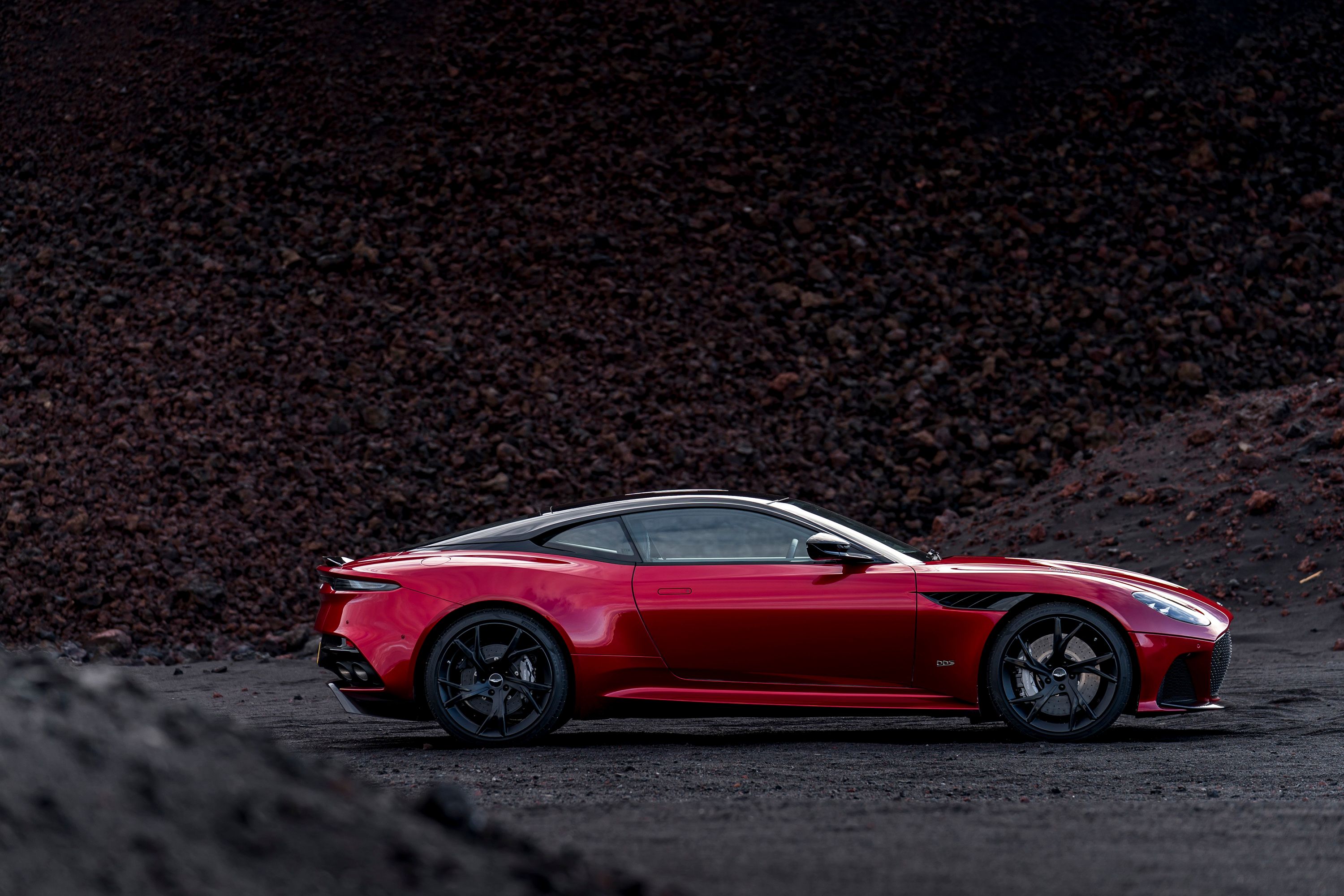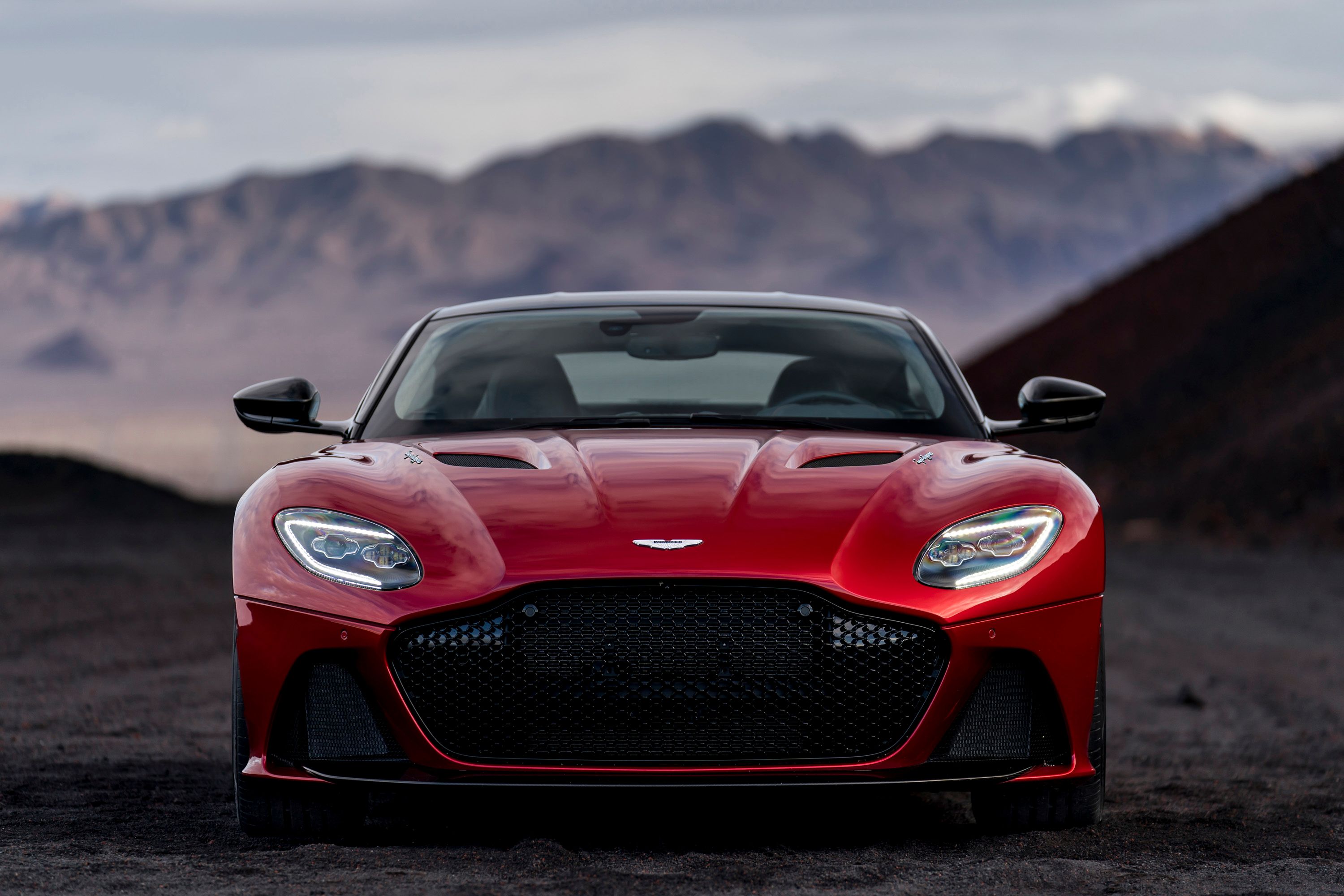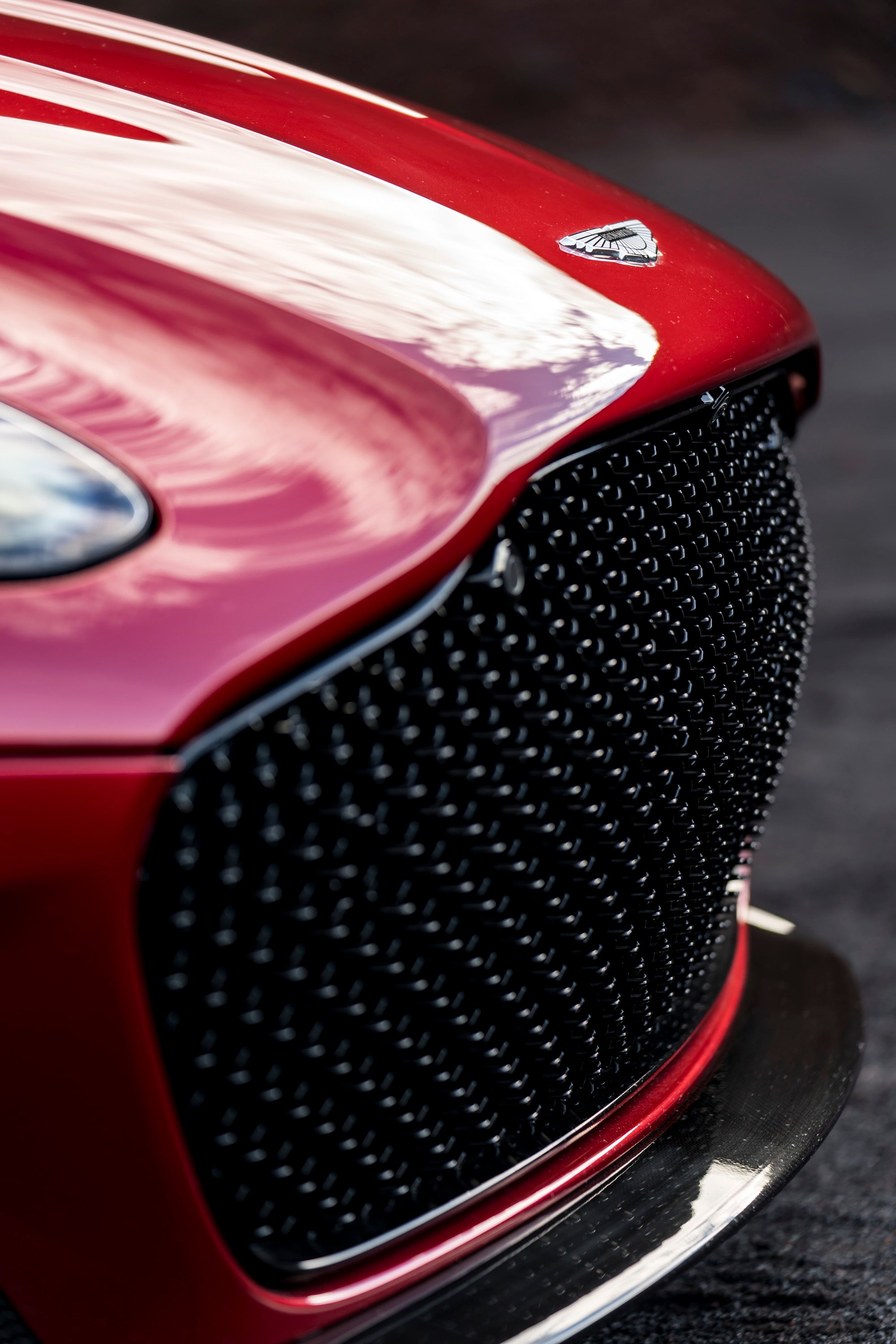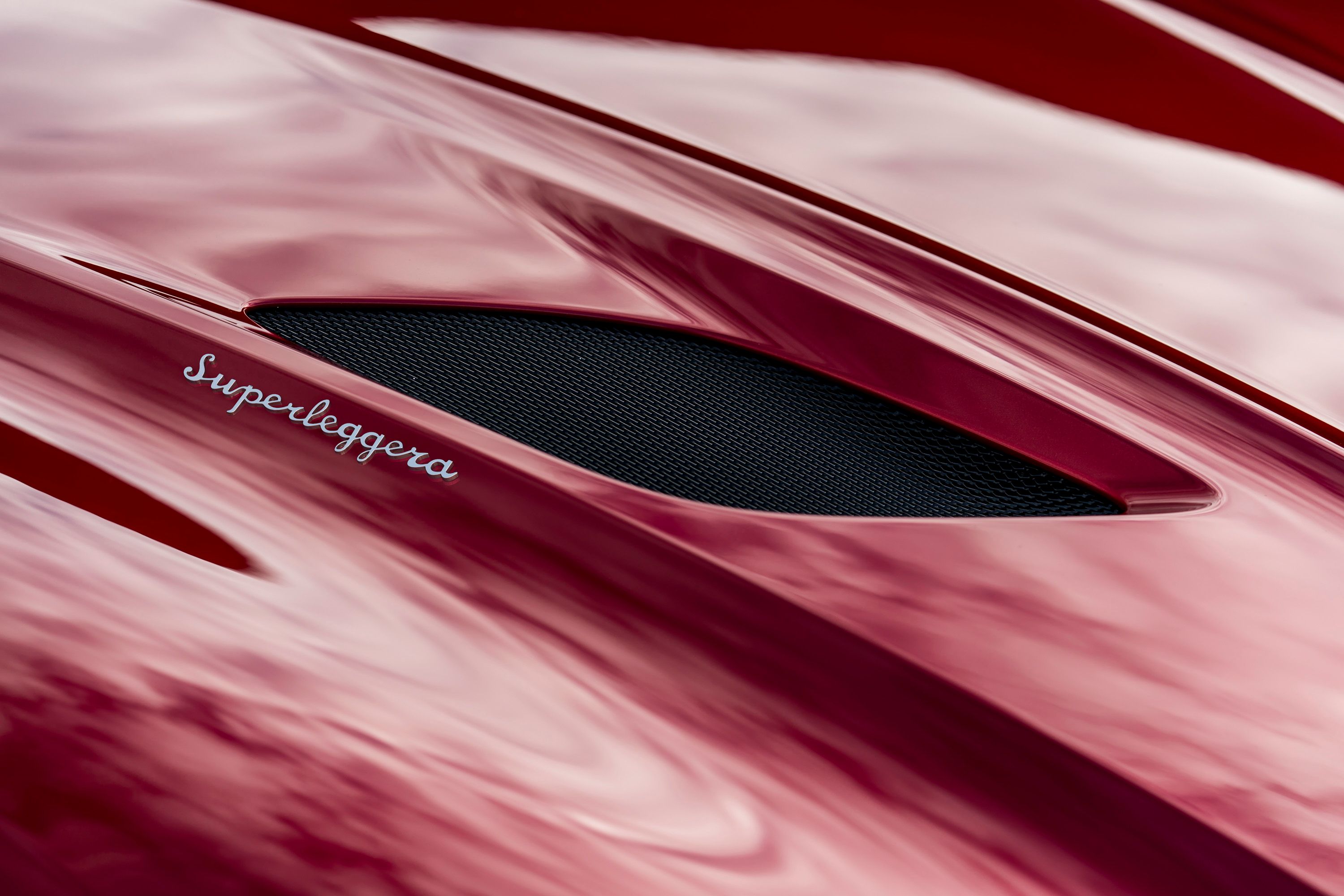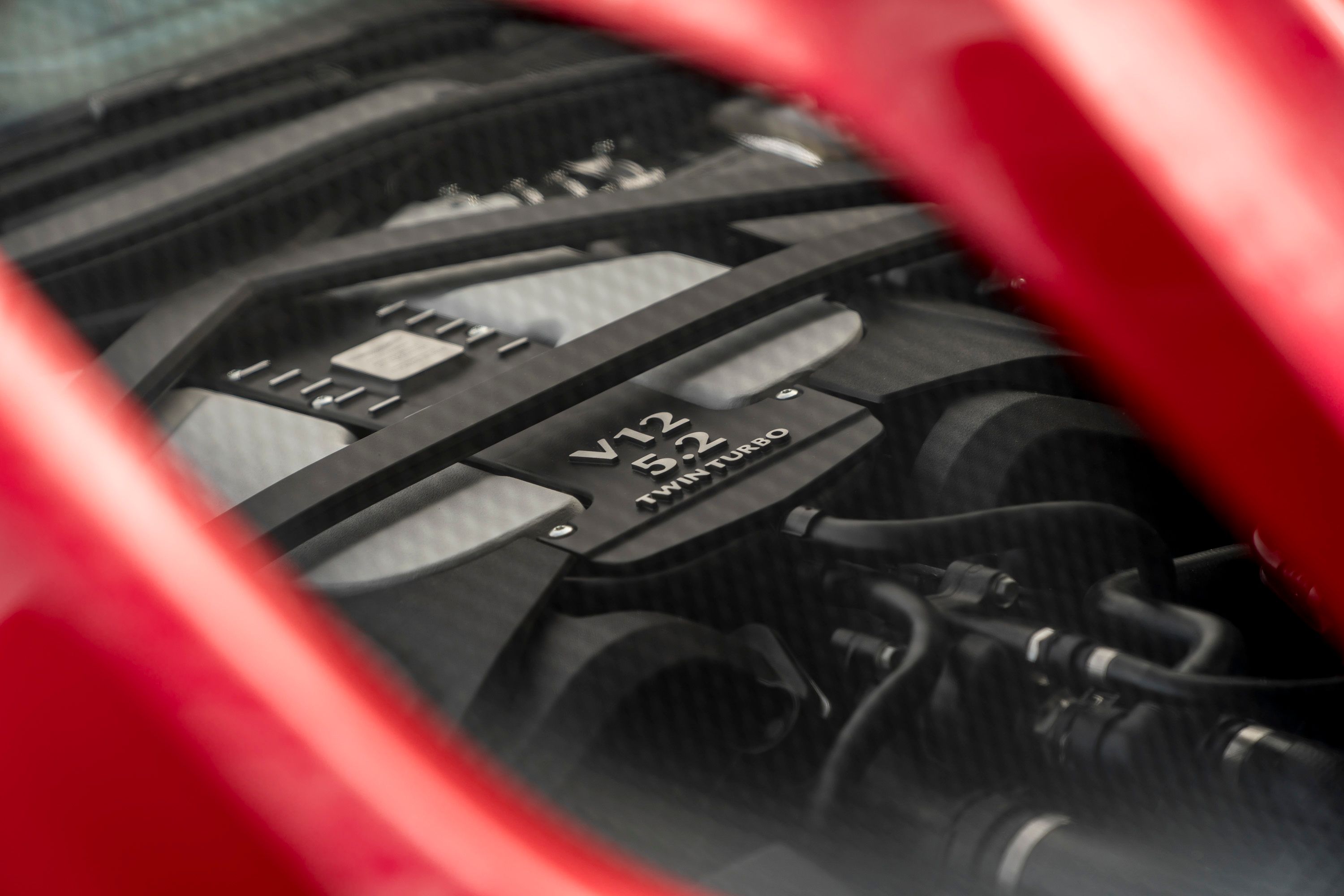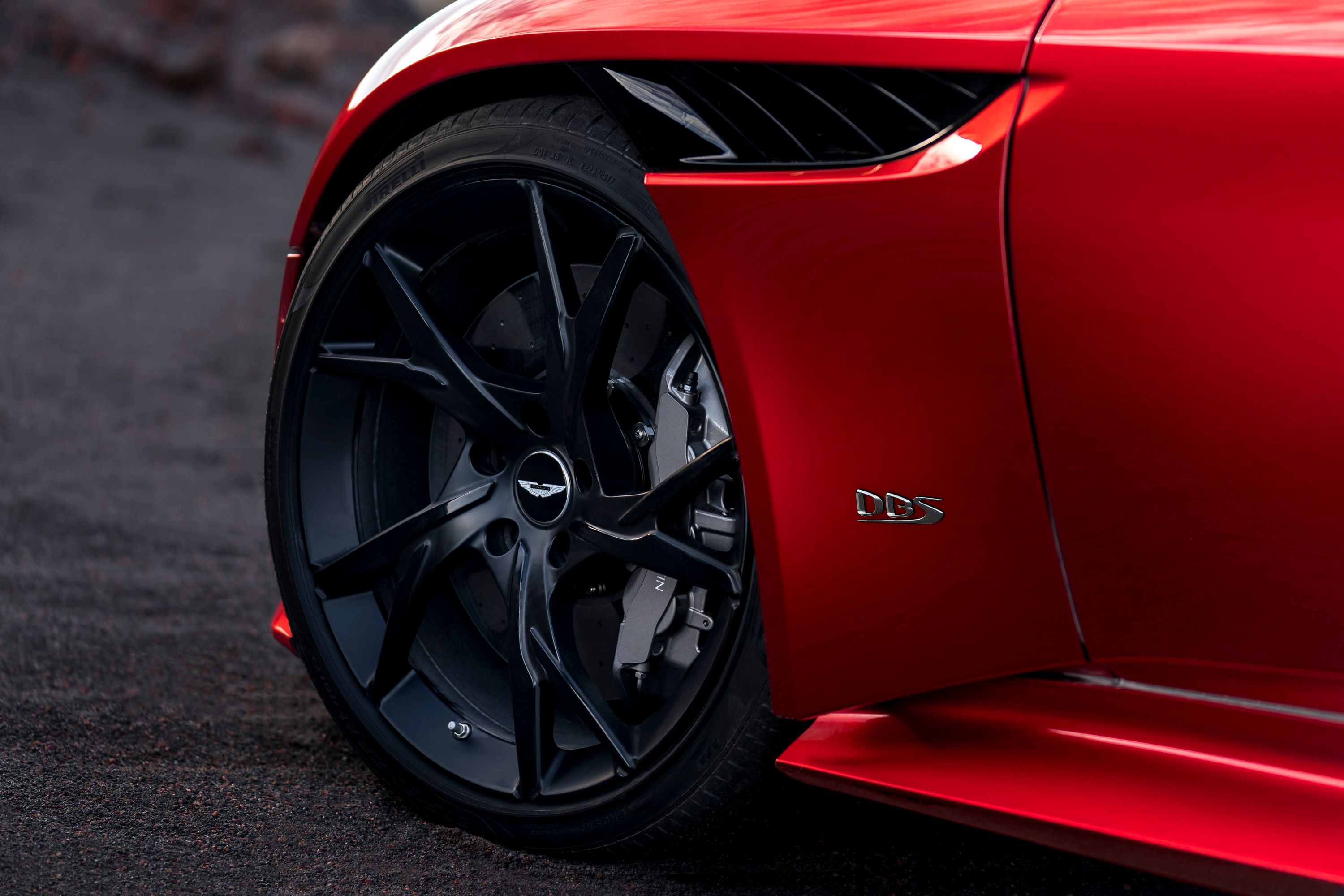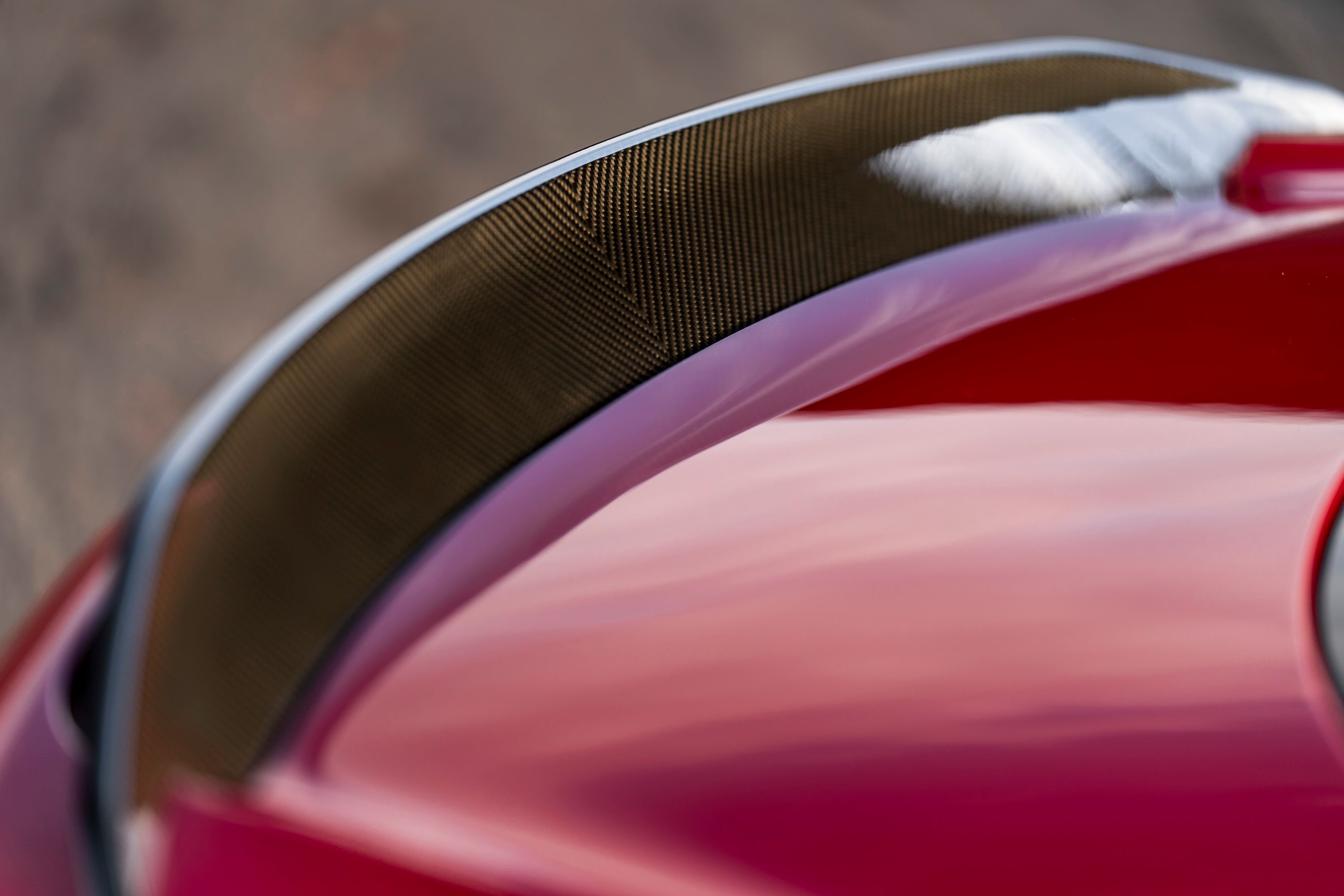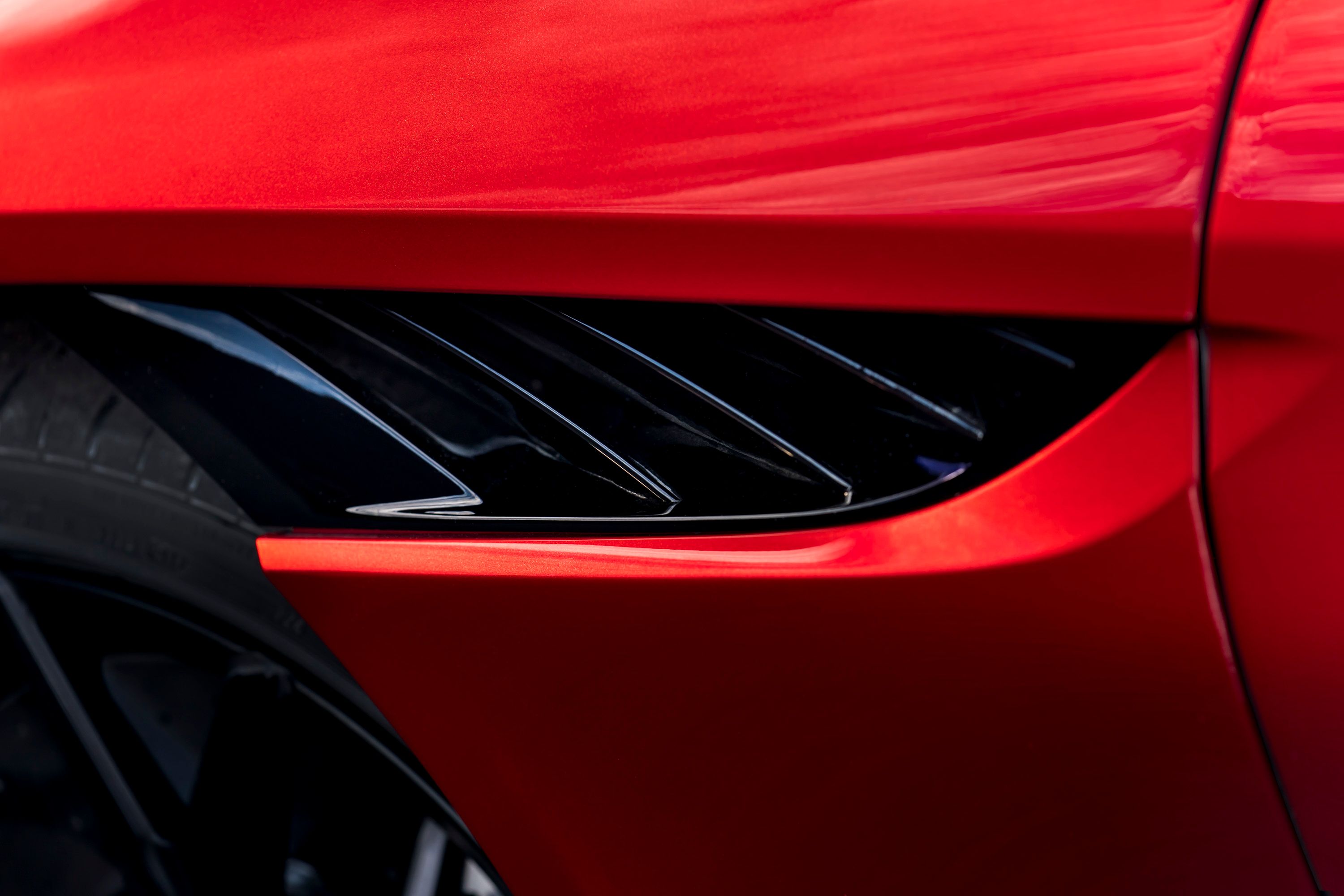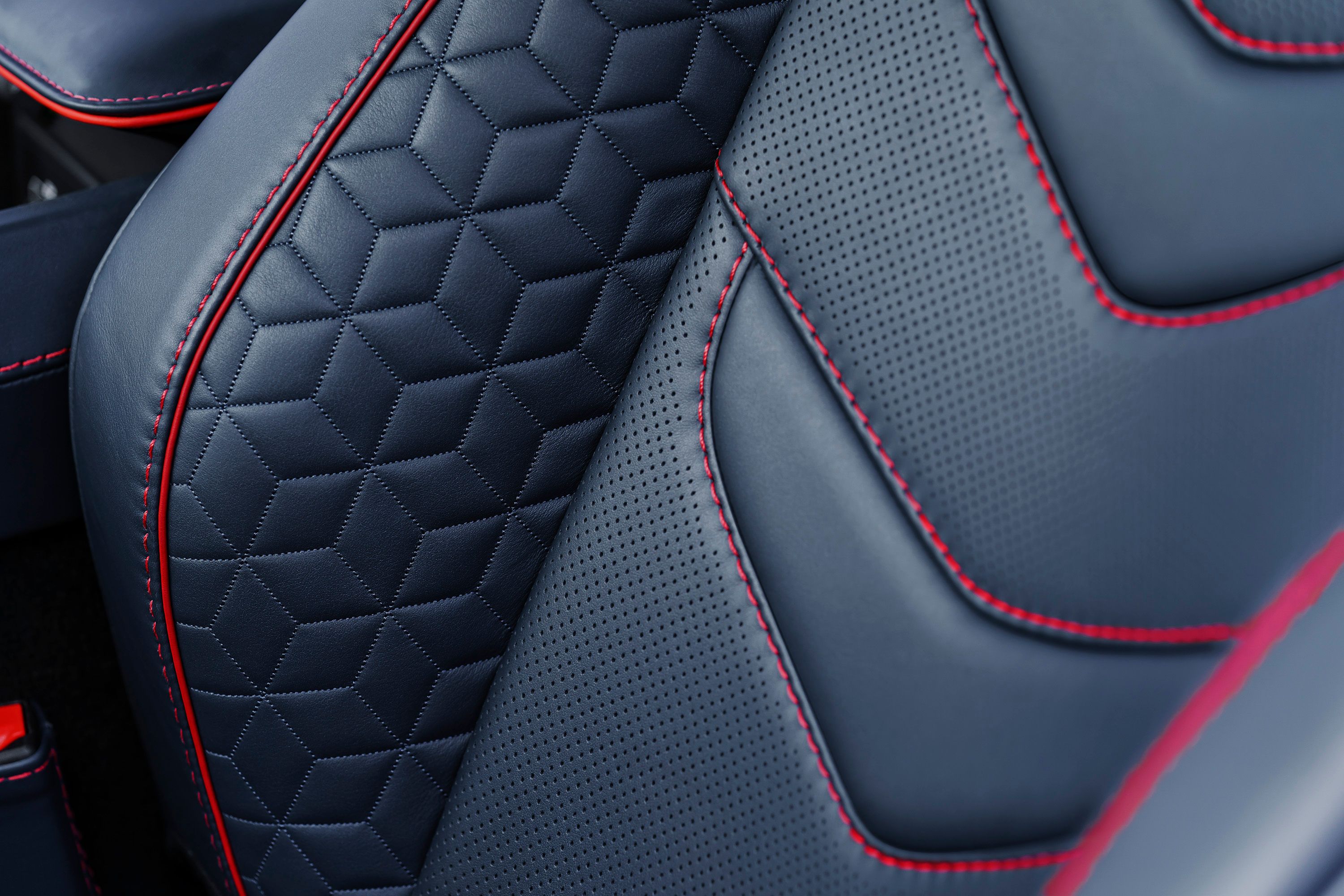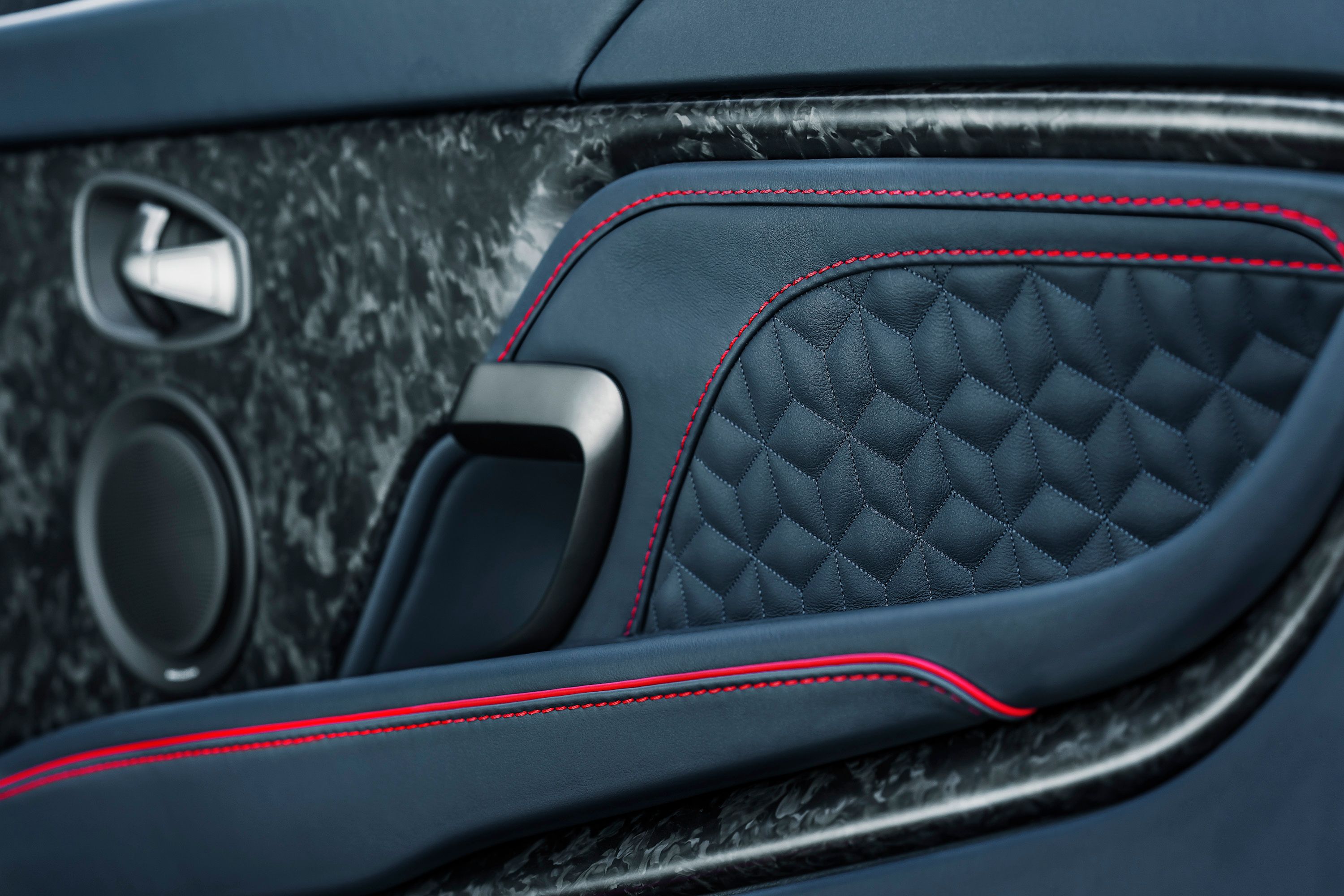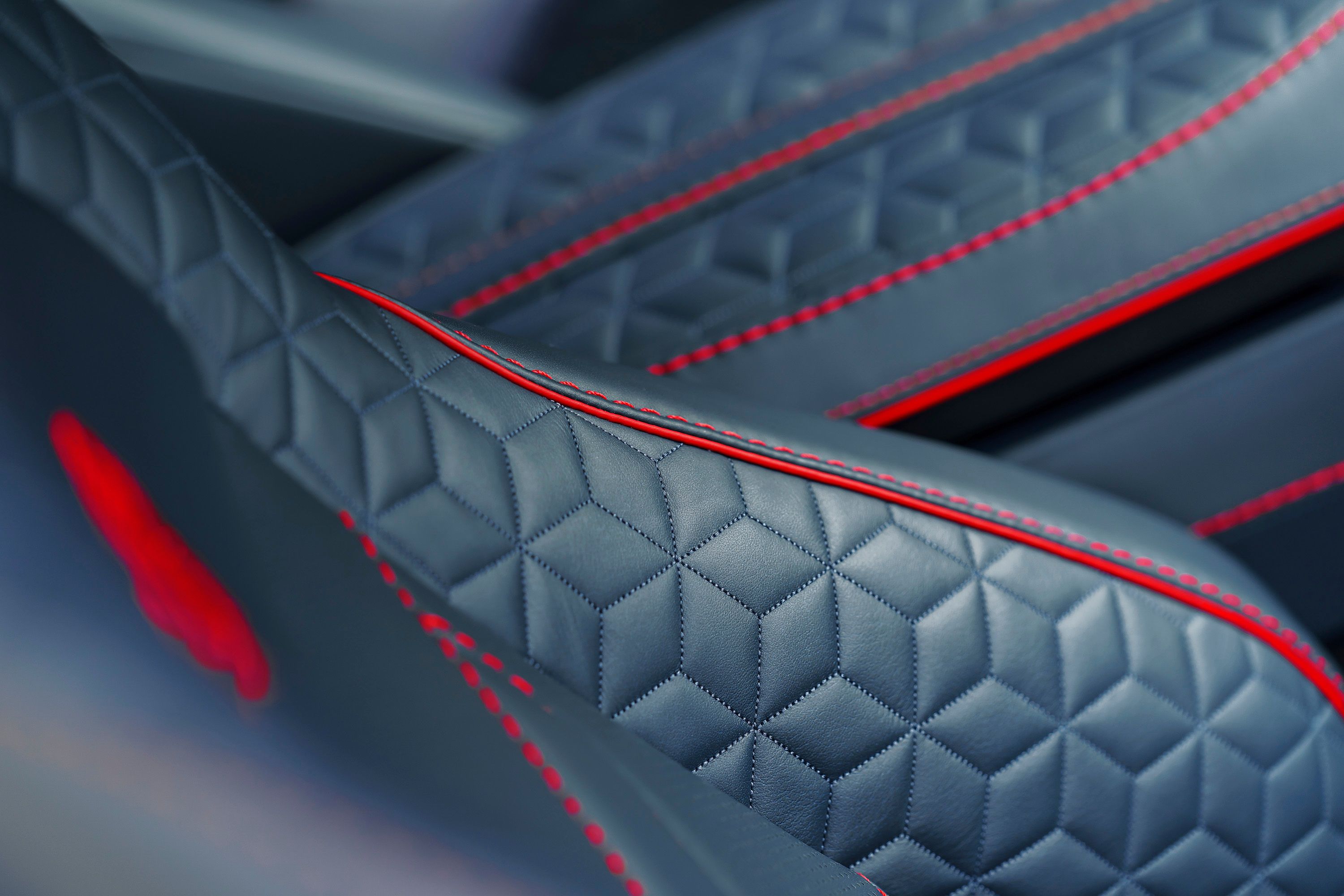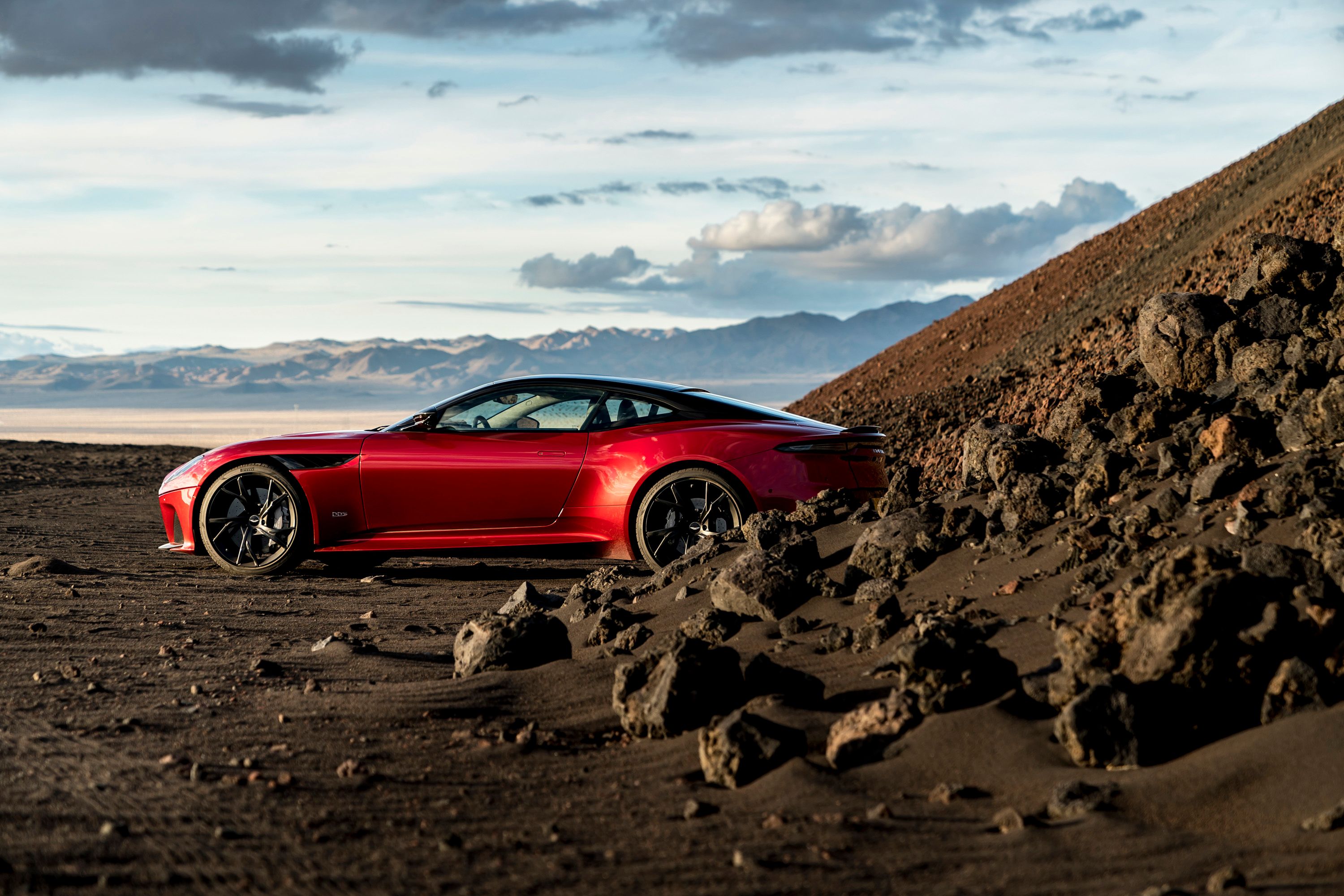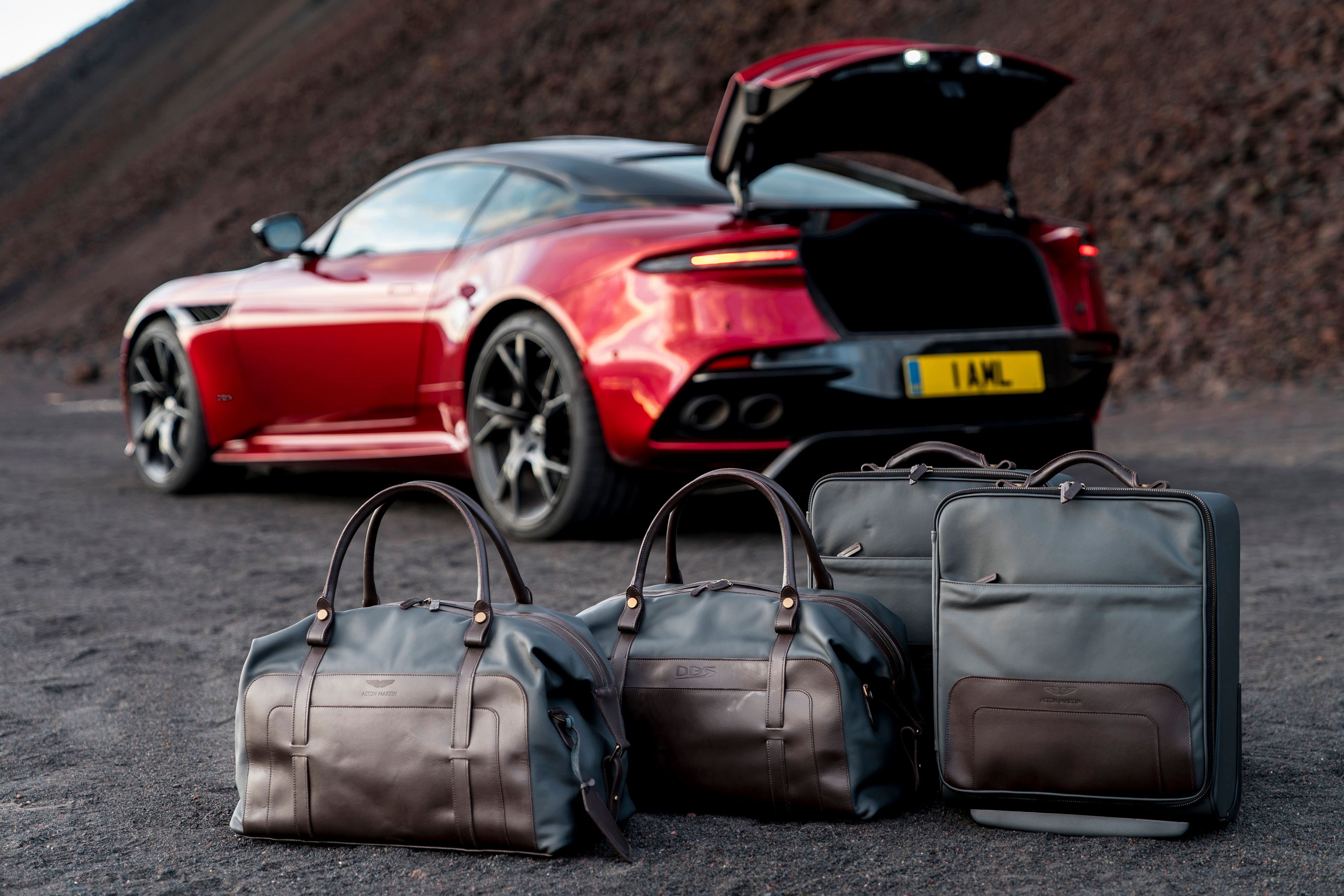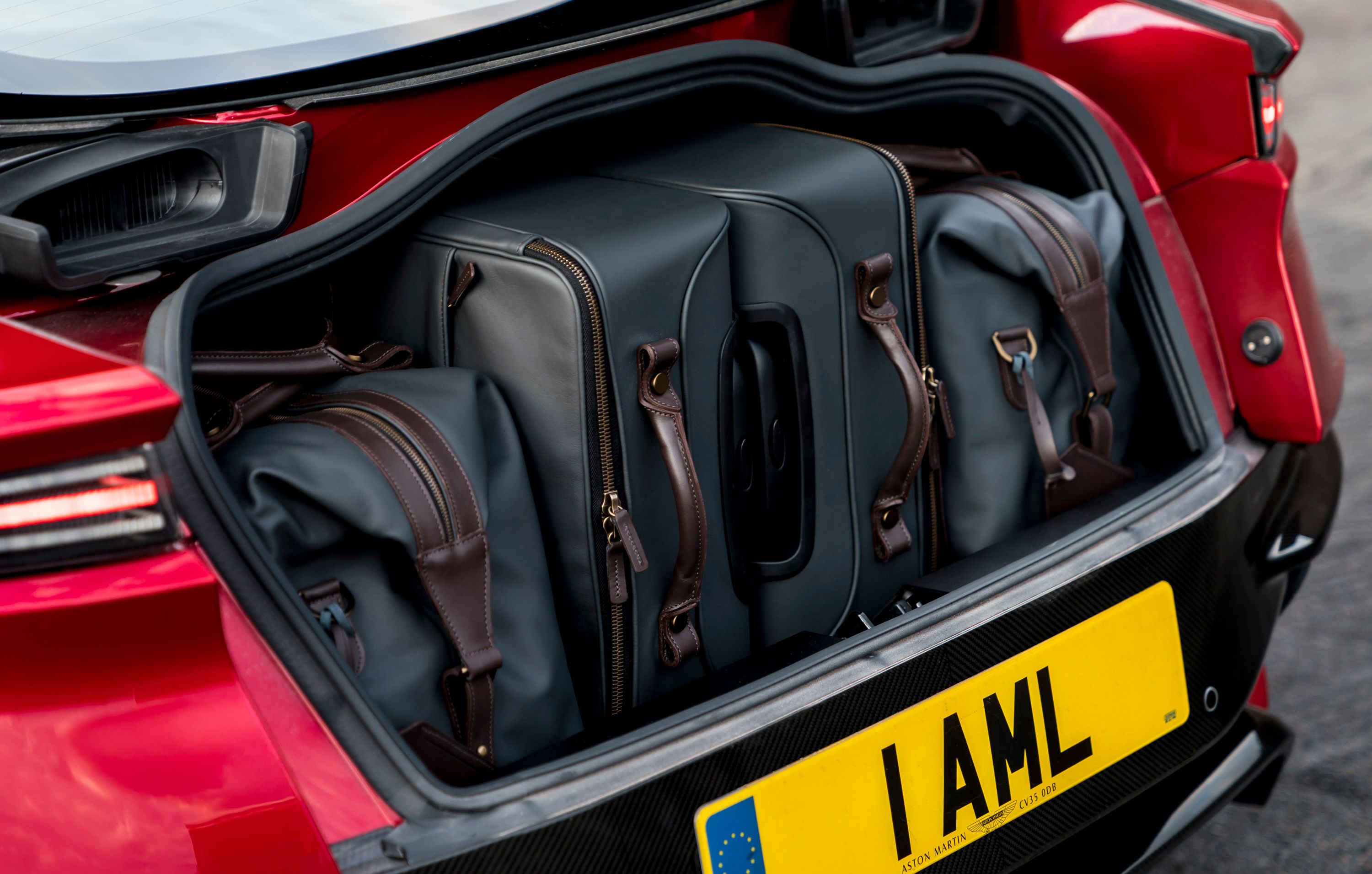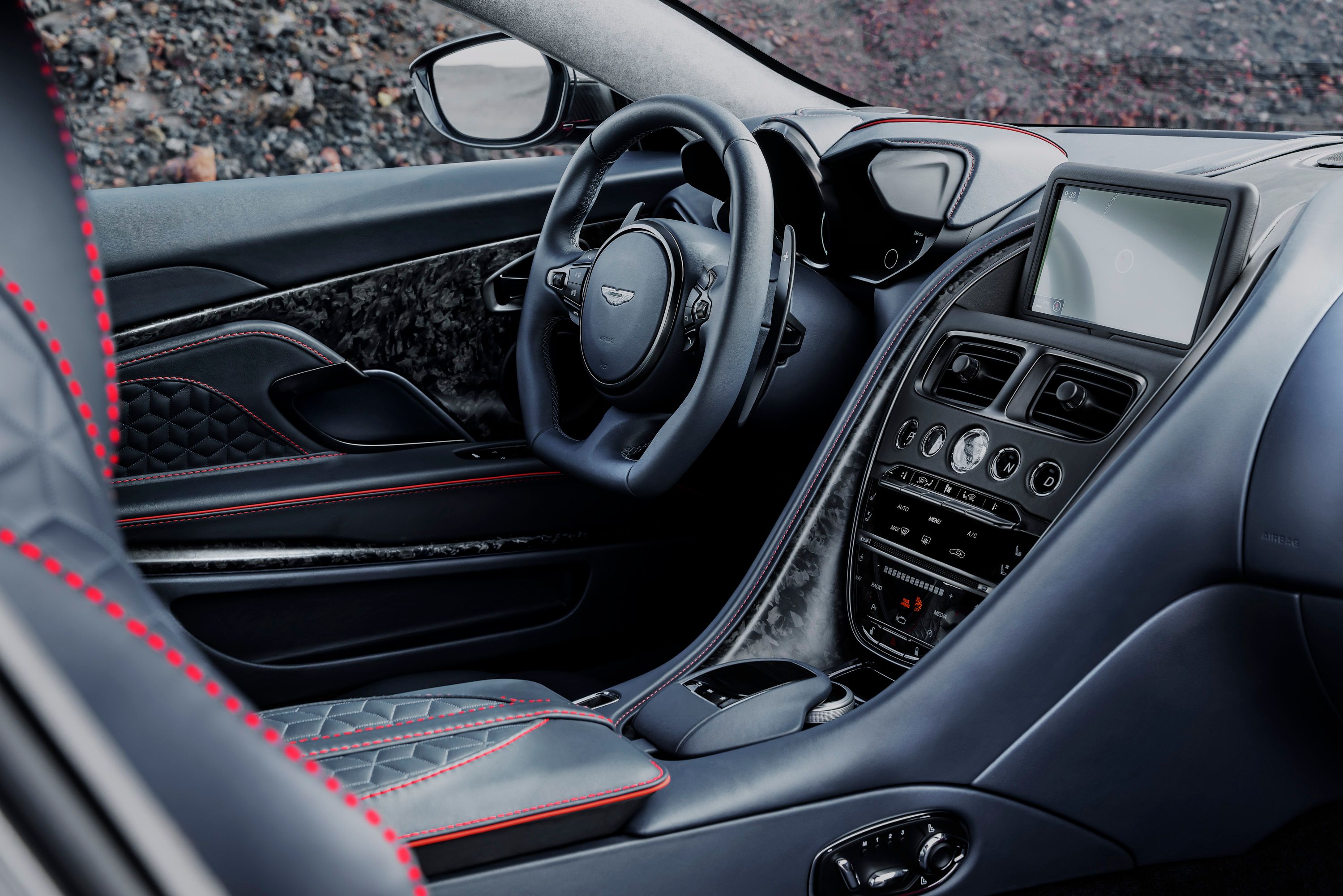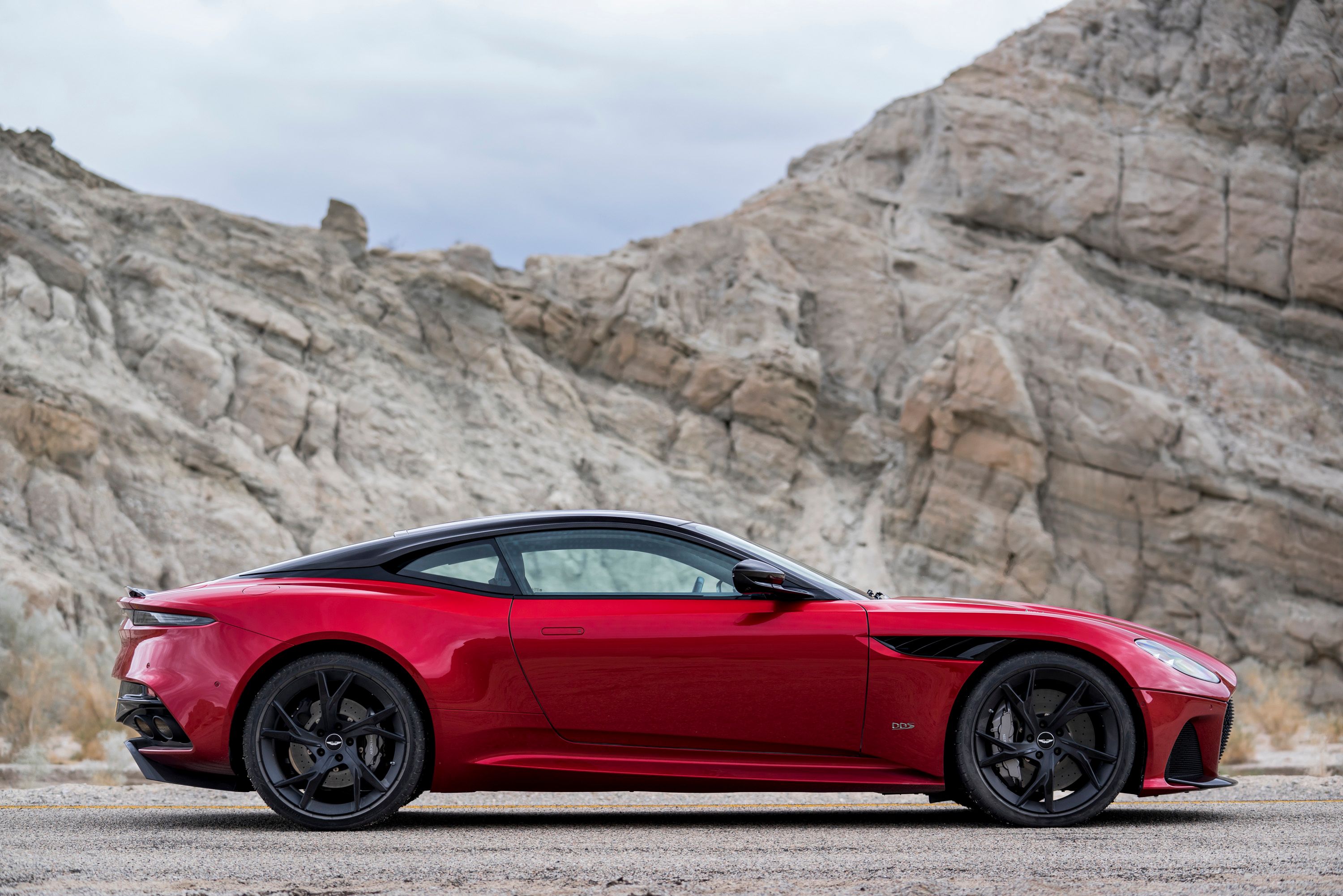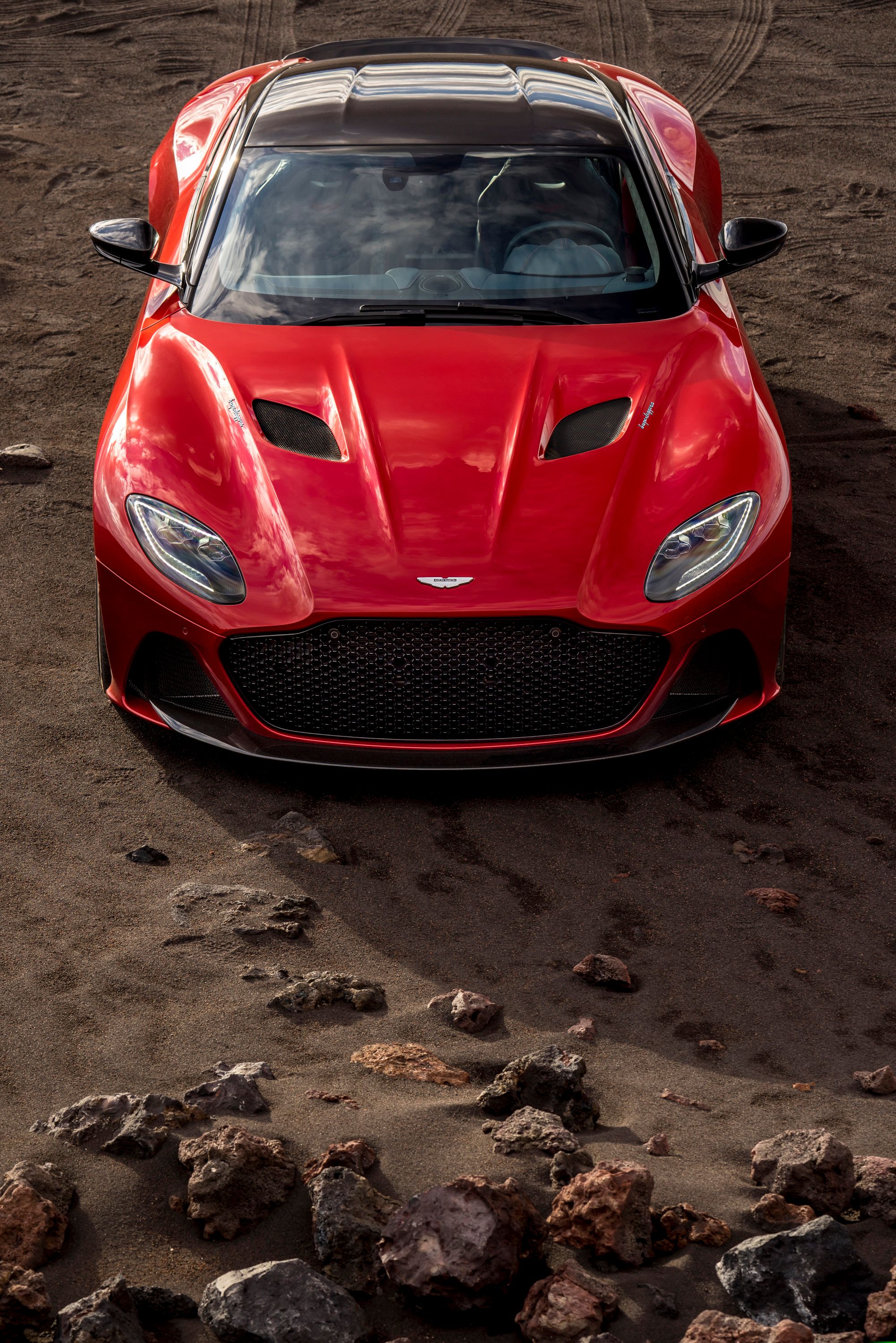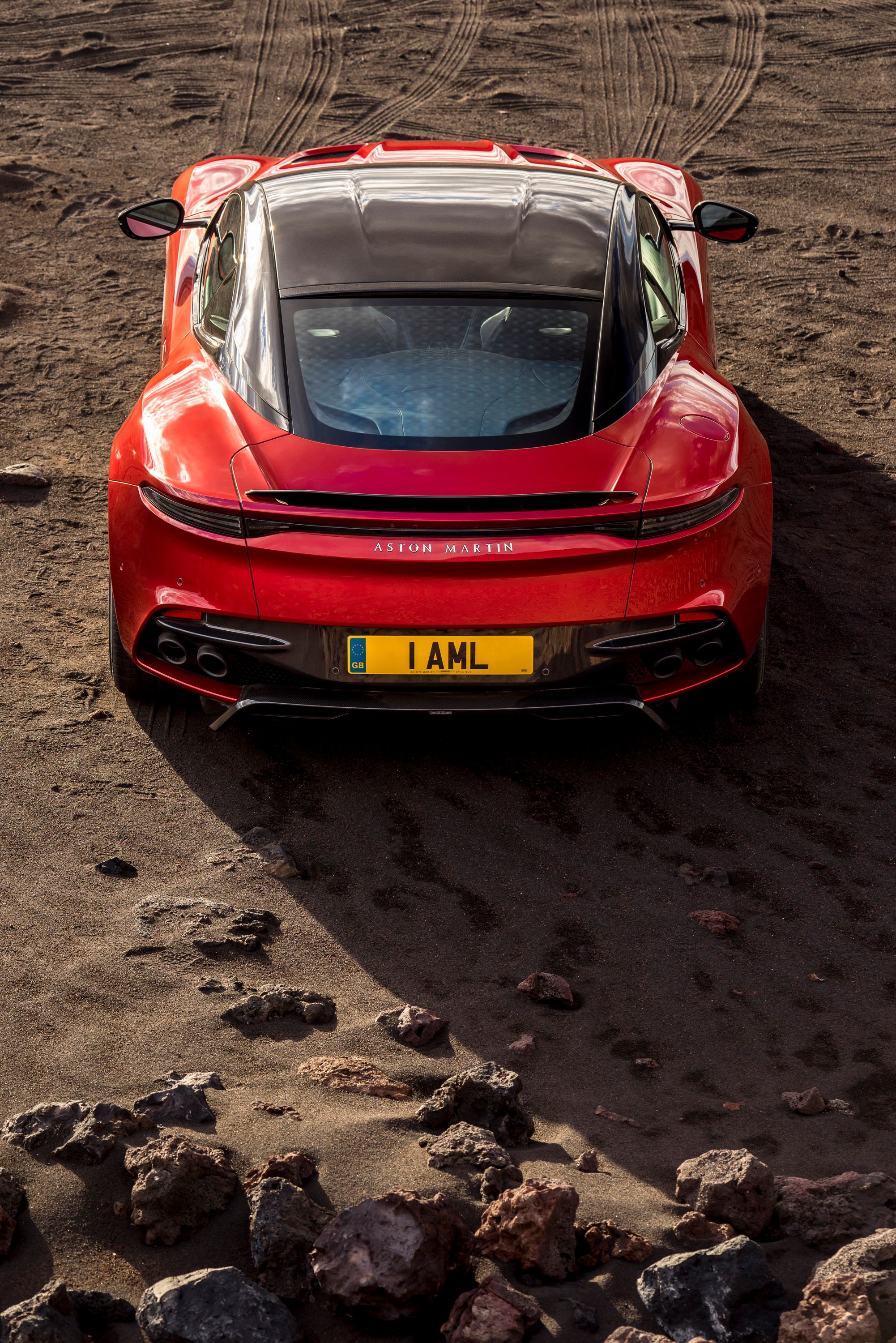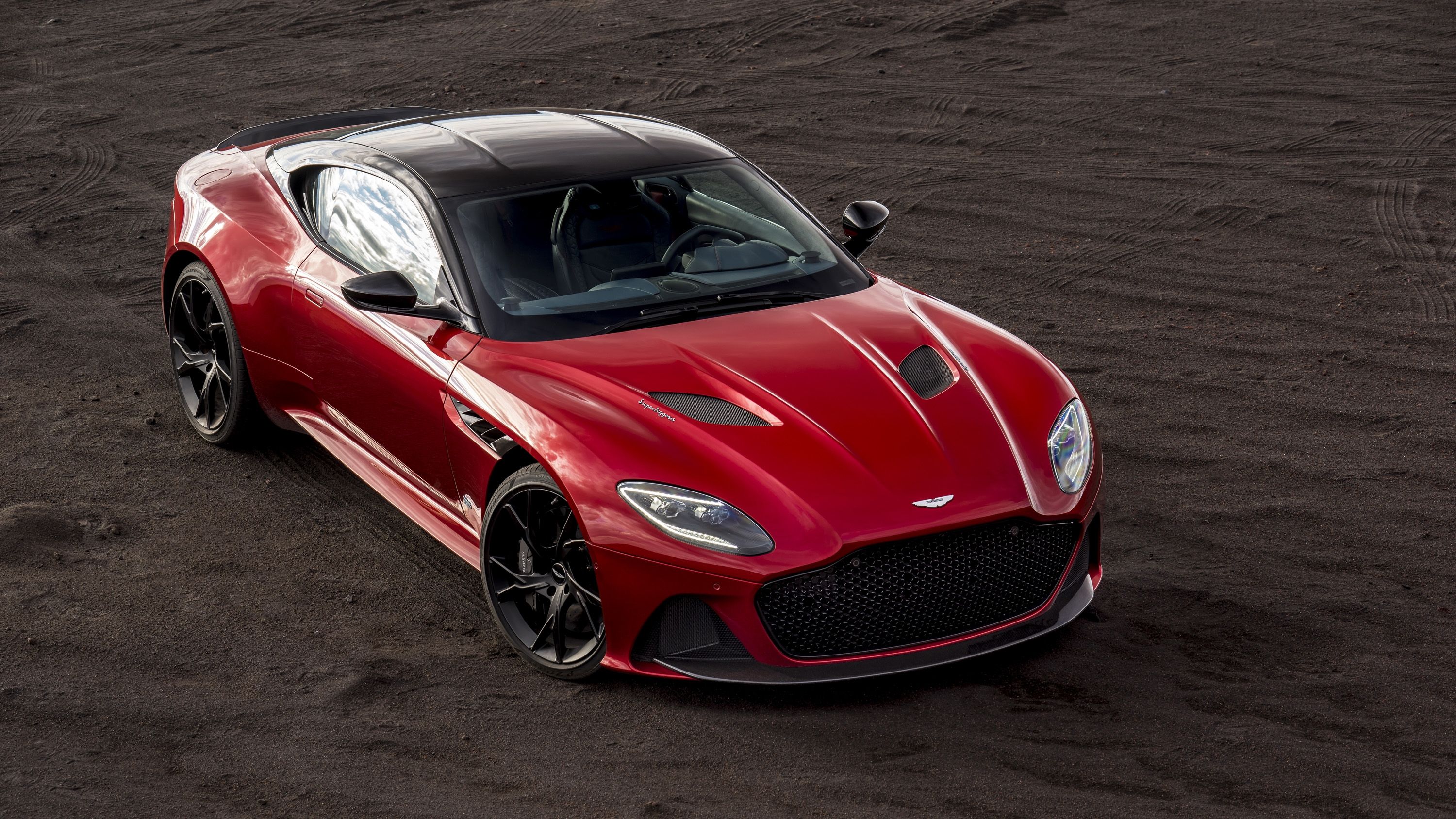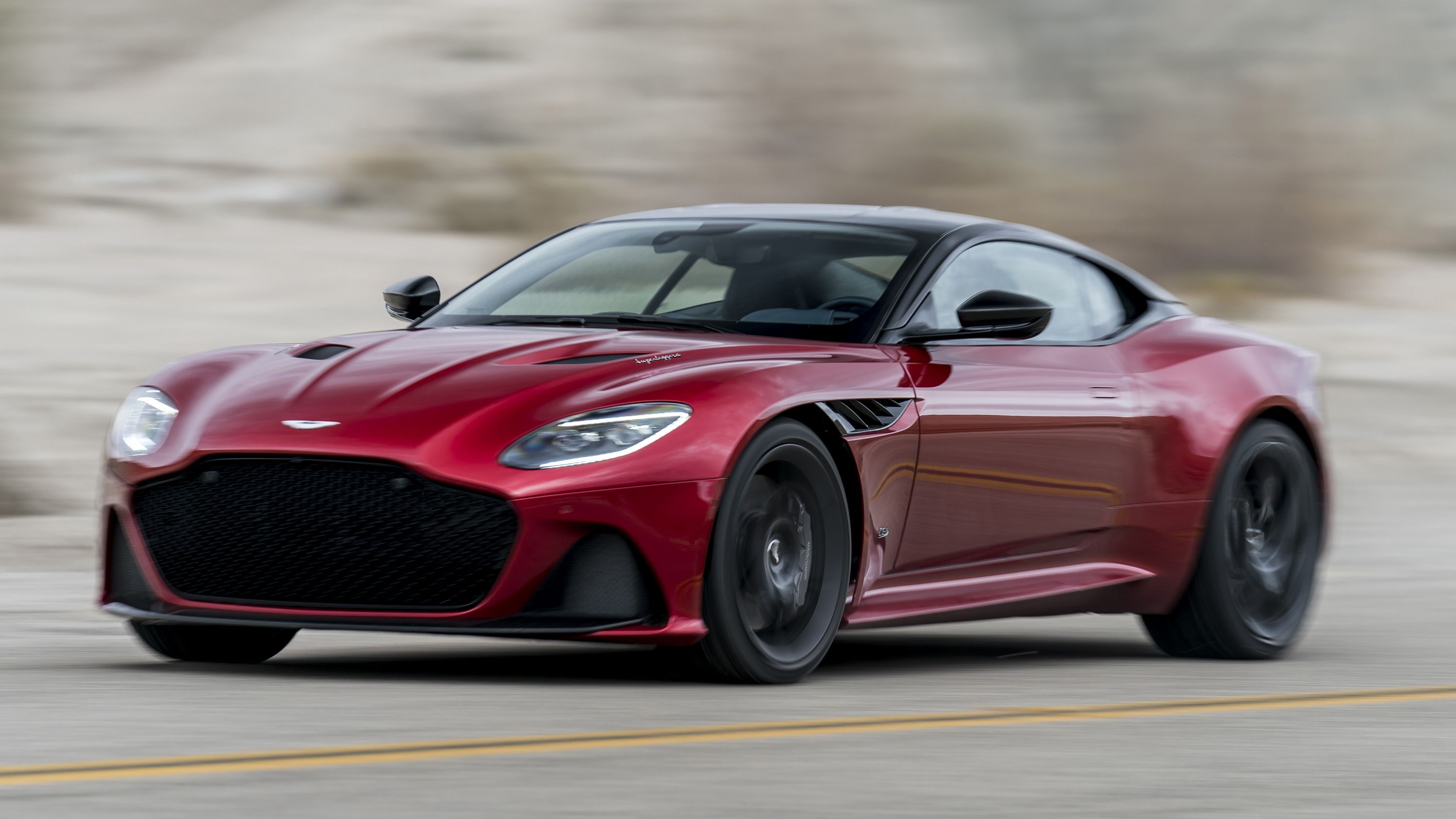Having redesigned the DB9, which changed its name to the DB11, and the Vantage, Aston Martin now introduced a replacement for the Vanquish S. Much like the DB9, the Vanquish name was retired and replaced by a badge that goes back to the late 1960s. Meet the DBS Superleggera, the company's new flagship grand tourer.
Built on the underpinnings of the DB11, the DBS Superleggera is lighter and more powerful. Tipping the scales at 3,733 pounds, the DBS shed nearly 160 pounds compared to the DB11. The grand tourer is also more aggressive by design, almost touching supercar territory thanks to its low-slung stance and really low ground clearance. The new grand tourer also pays homage to the historic super lightweight construction technology of the famous Italian coachbuilder Superleggera, which penned the iconic DB4 and DB5. Let's find out what the new DBS Superleggera is all about in the review below.
Continue reading to learn more about the Aston Martin DBS Superleggera.
2019 Aston Martin DBS Superleggera
- Make: Array
- Model: 2019 Aston Martin DBS Superleggera
- Engine/Motor: V12
- Horsepower: 715 @ 6500
- Torque: 663 @ 5000
- Transmission: ZF eight-speed automatic
- [do not use] Vehicle Model: Array
Aston Martin DBS Superleggera official video
Aston Martin DBS Superleggera Exterior
Much like the rest of the new Aston Martin lineup, the DSB Superleggera is a significant departure from the outgoing Vanquish. Sure, some cues still tie the DBS to the old Vanquish, but most of the design is part DB11-inspired and part unique. Size-wise, the DBS is slightly shorter than the Vanquish, the difference is almost negligible at eight mm (0.31 inches) though, but it's a whopping 241 mm (9.5 inches) wider. The wheelbase is also a bit longer, while the height remains exactly the same at 1,280 mm (50.4 inches). More importantly, it's made with carbon-fiber body panels to help cut down weight and improve agility.
The front fascia is extremely aggressive, with next to no bodywork under the nose. Almost the entire bumper is a big honeycomb grille, flanked by triangular outlets at the far corners. A bit splitter finishes off the lower apron. The headlamps are slim and sport a unique design compared to other Aston Martins, as well as a C-shaped LED pattern. Just like the Vanquish, it has a V-shaped engine hood with big vents toward the windshield.
The profile is muscular and organic. The first thing that catches the eye is that the traditional front fender strake was replaced by a louvered cutout. Aston Martin calls this design element an "open stirrup" or "curlicue" and it's inspired by the Vulcan supercar and the Vantage GTE race car. It allows air to escape and flow along the car's flanks, improving aerodynamics. The side skirts are wide and aggressive, an effect complemented by the deeply sculpted dent under the door. The muscular rear haunches are highlighted by the steeply raked roofline and the surprisingly long decklid. The entire roof is finished in black, providing a two-tone, classic contrast with the bright red body of the presentation model. Aston Martin offers three roof finishes, including gloss black, Twill Gloss Carbon Fiber, and Gloss Carbon Fiber Tinted Black.
The multi-spoke, lightweight wheels provide further hints that the DBS Superleggera is no slouch. You can pick between two 21-inch designs, forged Y-spoke and forged twin-spoke. Finishes include gloss or satin black and satin black with satin bronze accents.
Around back, the DBS has "supercar" written all over it. Both the fascia and the taillights are extremely narrow, while the light bar that runs across the entire width of the car helps with the planted stance. The small spoiler on top of the decklid, the Aeroblade that Aston Martin first used on the DB11, further improves aerodynamics. Down below, the titanium exhaust pipes and the license plate are mounted in a black panel that appears to be floating under the fascia. Attached to this panel is an aggressive, F1-inspired diffuser that has two big blades on each side. The Aeroblade and the diffuser help the DBS generate 397 pounds of downforce at maximum speed, the highest for a production, road-legal Aston Martin. Impressively enough, the Brits claims that this additional downforce doesn't generate extra drag.
All told, the DBS Superleggera is sexy as hell and combines aggressiveness with elegance in an impressive manner. It’s not as boring as the Bentley Continental GT, but it’s also not as menacing as the Ferrari 812 Superfast. It’s just perfect!
Aston Martin DBS Superleggera Exterior Dimensions
|
Length |
4,712 mm (185.51 inches) |
|
Width |
2,146 mm (84.48 inches) (including door mirrors) |
|
Rear width |
1,968 mm (77.48 inches) (excluding door mirrors) |
|
Front width |
1,942 mm (76.45 inches) (excluding door mirrors) |
|
Height |
1,280 mm (50.39 inches) |
|
Wheelbase |
2,805 mm (110.43 inches) |
|
Front overhang |
915 mm (36.02 inches) |
|
Rear overhang |
995 mm (39.17 inches) |
|
Ground clearance |
120 mm (4.72 inches) (excluding air dam) |
|
Ground clearance |
90 mm (3.54 inches) (including air dam) |
|
Front track |
1,665 mm (65.55 inches) |
|
Rear track |
1,645 mm (64.76 inches) |
|
Angle of approach |
5 degrees |
|
Angle of departure |
13 degrees |
|
Turning circle |
4m (13.12 ft) |
Aston Martin DBS Superleggera Interior
Not surprisingly, the DBS’ interior is almost identical to the DB11. It has the same organic dashboard with inclined A/C vents at the corners and the same center stack that’s wide at the top and becomes narrower to the bottom. The layout is identical, with a big infotainment display at the top and two rectangular A/C vents below. Underneath, we can see the same buttons for the transmission and them more controls for the air conditioning system and various functions.
The steering wheel is also identical, but the instrument cluster is different. While the DB11 has a big rectangular hood, the DBS has a sportier cover with three distinct elements. Naturally, the 12-inch TFT instrument cluster also has different graphics. Three looks are available for the car's driving modes, which are GT, Sport, and Sport Plus. Both the instrument cluster and the eight-inch infotainment display, which is a bit small for modern standards, provide access to a wide range of systems and features. There's satellite navigation with wi-fi, an audio system with DAB, Bluetooth audio and phone streaming, iPod, iPhone, and USB compatibility, and a standard 360-degree camera with Parking Distance Display and Park Assist.
The upholstery also looks familiar, a sign that the DBS gets the same features and options as the DB11. The aromatic leather and Alcantara comes standard, joined by a almost limitless combinations colors and finishes, complement by aluminum and carbon-fiber trim. The layered Nexus quilting and Celestial perforation, which debuted in the DB11, can be had in the DBS as well. Trim inlays include dyed, open-pore Tamo ash, twill carbon-fiber, or the satin chopped carbon-fiber seen first in the DB11. The standard sports seats get a few optional seatback veneers as well, in piano black, ash, carbon-fiber, or chopped carbon. Seat belt color options include Flint, Champagne, Spicy Red, Mocha, and Graphite.
The tech package is as rich as the DB11's, but it comes with a few extra standard features. On top of the a new satellite navigation system, premium audio system, auto-park assist, and a 360-degree camera, the grand tourer is also fitted with a standard tire pressure monitoring system and keyless entry.
The DBS Superleggera offers a bit more room inside the cabin than the outgoing Vanquish S, but it remains a 2+2 car with not much comfort for rear-seat passengers. The trunk is now big enough to accommodate two large trolley bags and smaller carry-on baggage. Needless to say, it's not the kind of car you want to take on vacation, but it's roomy enough for a golf match with a friend and light shopping.
Aston Martin DBS Superleggera Performance
As expected, motivation is provided by the twin-turbo, 5.2-liter V-12 engine that Aston Martin debuted in the DB11. But the unit was revised for a more powerful setup, now generating 725 PS and 900 Nm of torque, which converts to 715 horsepower and 664 pound-feet of twist. That’s a solid, 123-horsepower and 199 pound-foot increase over the outgoing Vanquish S. It’s also an extra 115 horses and 148 pound-feet compared to the DB11.
All that power travels to the rear wheels through a revised version of the company’s ZF-source eight-speed automatic and enables the grand tourer to hit 62 mph from a standing start in an amazing 3.4 seconds. That’s two tenths quicker than the Vanquish S and a half-second faster than the DB11. Also, the DBS charges from 50 to 100 mph, in fourth gear, in just 4.2 clicks.
Top speed also increased to 211 mph, 10 mph more than the Vanquish S and 11 mph more than the DB11.
The drivetrain can be used in three dynamic modes. The GT mode provides that comfortable grand tourer ride with smooth shifts, while the Sport setting gives it more grunt. The Sport Plus mode is the most aggressive setup of the DBS, enabling the quickest off-the-line sprints and a race-inspired exhaust note.
But what about fuel economy? Granted, this is something that Aston Martin customers aren't usually concerned about, but it's worth noting that the DBS delivers far better mileage than the outgoing Vanquish S. While the previous grant tourer had a rating of 16 mpg combined, the DBS Superleggera is good for 22.9 mpg combined. Of course, the big improvement comes from the twin-turbo setup and the fact that the car is both lighter and more aerodynamic.
Aston Martin DBS Superleggera Drivetrain Specifications
|
Engine |
All-alloy quad overhead cam, 48-valve 5.2-litre bi-turbo, V12 with stop/start cylinder deactivation |
|
Cooling |
Water-to-air Charge |
|
Drive |
Front mid-mounted engine, rear-wheel drive |
|
Compression ratio |
9.3:1 |
|
Maximum power |
715 HP @ 6,500 RPM |
|
Maximum torque |
663 LB-FT @ 1,800-5,000 RPM |
|
Acceleration 0-62mph (0-100km/h) |
3.4 seconds |
|
Maximum speed |
211mph |
|
Transmission |
Rear mid-mounted ZF eight-speed automatic |
Chassis, Suspension, and Brakes
The chassis is also closely related to the DB11, but the DBS Superleggera rides five millimeters (0.2 inches) closer to the ground and features an updated suspension geometry with more camber at all corners and adaptive dampers as standard. The setup includes forged double wishbones at the front and a sophisticated multi-link system at the rear and transfer all that power to the ground with help from a a mechanical limited-slip differential with Dynamic Stability Control and Dynamic Torque Vectoring. By braking individual wheels, this setup significantly improves the car’s cornering capabilities. The grand tourer also uses traction control and positive torque control features.
Stopping power comes from standard carbon-ceramic discs that measure 16.1 inches up front and 14.2 inches to the rear. These are paired with six-piston and four-pot calipers, respectively. Thanks to the increased thermal capacity of carbon-ceramic brakes, Dynamic Torque Vectoring can be used to greater effect compared to vehicles fitted with standard braking systems. Bringing the car to a halt in maximum safety is also aided by features like Electronic Brake Distribution, Emergency Brake Assist, Traction Control, Hydraulic Brake Assist, and Positive Torque Control. The custom-made Pirelli tires provide the necessary grip for both off-the-line launches and braking.
|
Suspensions |
|
|
Front independent double wishbone design coil springs, anti-roll bar and adaptive damping |
|
|
Rear multi-link, coil springs, anti-roll bar and adaptive damping |
|
|
Adaptive Damping System (ADS) with Skyhook technology modes GT, Sport and Sport Plus |
|
|
WHEELS AND TYRES |
|
|
21” Forged Y spoke wheel – silver |
|
|
Front 21” Pirelli P Zero 265/35/21 |
|
|
Rear 21” Pirelli P Zero 305/30/21 |
|
|
Brakes |
|
|
Front ventilated carbon ceramic brake discs 410mm diameter |
|
|
Rear ventilated carbon ceramic brake discs 360mm diameter |
|
|
Electric park brake |
|
|
Dynamic Stability Control (DSC) |
|
|
Anti-lock braking system (ABS) |
|
|
Electronic Brake Distribution (EBD) |
|
|
Emergency Brake Assist (EBA) |
|
|
Traction Control (TC) |
|
|
Hydraulic Brake Assist (HBA) |
|
|
Positive Torque Control (PTC) |
|
|
Dynamic Torque Vectoring (DTV) |
Aston Martin DBS Superleggera Pricing
Pricing for the new DBS Superleggera starts from $304,995 in the U.S., with deliveries scheduled to begin in the third quarter of 2018. The new grand tourer is around $10,000 more expensive than the Vanquish S, but it's also significantly more expensive than that the DB11, which retails from around $200,000.
Aston Martin DBS Superleggera Competition
Bentley Continental GT
The DBS will also replace the Vanquish as a traditional competitor for the Bentley Continental GT. The British grand tourer was redesigned in 2017 and benefits from a sportier design, but the standard model is not as powerful as the DBS is expected to be. The new twin-turbo, 6.0-liter W-12 engine cranks out 626 horsepower and 664 pound-feet of torque and enables the coupe to hit 62 mph in 3.6 seconds. Obviously not enough. But this is where the upcoming GT Speed model comes in. Likely to deliver close to 650 horsepower, the GT Speed should be quicker too. If that's not enough, Bentley will launch a Supersports version with at least 700 horsepower at some point, and this one should be both more powerful and quicker than the DBS Superleggera. Pricing for the Continental GT starts from around $220,000 for the model equipped with the W-12 engine, but the Supersports should fetch close to $300,000 when it arrives.
Read our full review of the 2018 Bentley Continental GT.
Ferrari 812 Superfast
The Vanquish S had what it took to compete with the Ferrari F12berlinetta, so the DBS Superleggera will go against its successor, the 812 Superfast. Launched for the 2018 model year, the 812 Superfast looks significantly different on the outside, sporting a more modern and aggressive design. The interior is pretty much identical to the F12berlinetta, but that's not a bad thing. The cabin still looks fresh, and the race-inspired features and luxury items place it at the top of the market. Under the hood, the naturally aspirated, 6.3-liter V-12 was enlarged to 6.5 liters, and power increased to 789 horsepower and 530 pound-feet of torque. That's a lot more oomph than what the DBS Superleggera is expected to get. Naturally, the 812 Superfast is quicker too, needing three seconds to reach 62 mph from a standing start. Top speed is superior too at 211 mph. Not surprisingly, the 812 Superfast is the most expensive of the bunch, retailing from around $335,000 in the United States.
Read our full story on the 2018 Ferrari 812 Superfast.
Conclusion
Don't let the new name confuse you, the DBS Superleggera will live on as the company's flagship grand tourer. It will continue to deliver supercar-like performance and offer the ultimate in hand-crafted British luxury. Although the Vanquish name is already iconic among enthusiasts, the DBS is equally dramatic and the fact that Aston Martin is again using a "Superleggera" badge adds a dash of heritage to the car. Modern, lighter, and more powerful, the DBS Superleggera will makes us forget about the Vanquish S in no time.
Further reading
Read our full review on the 1970 Aston martin DBS.
Read our full review on the 2012 Aston Martin DBS Coupe.
Read more Aston Martin news.

